The Unexplored North - Northern Peru Travel Itinerary
:max_bytes(150000):strip_icc():format(webp)/ayngelina-profile-small-56a413235f9b58b7d0d55abb.jpg)
Baconismagic.ca
This Peru travel itinerary features the best of what to see northern Peru in two weeks.
A region overshadowed by the jewel of the South - Machu Picchu , northern Peru has so much to offer and yet is often only visited by other South American tourists. And while it doesn't have the flash and luxury of Lima or Cusco the prices are bargain basement and many times you'll find you're the only tourist around.
Below is a great itinerary for 10-14 days if you're coming in from Ecuador. If you're coming in from Lima simply do the North-South itinerary in reverse!

Mancora 3-4 days
Mancora is most often visited by travelers coming from Ecuador or tourists who have just hiked Machu Picchu and want to relax on the beach. With a reputation of being a world class surfing site, it attracts a big surf crowd. If you're looking to surf all day and party all night then stay in town.
For those looking for a more relaxed holiday, take a cue from Peruvians and visit one of the quieter beaches just outside Mancora. The beach hotels are much less expensive, as are the restaurants and if you want to head into town taxis are only $1-2.
Chiclayo 2-3 days
This is not a pretty city but it is a great stopping point to see the Lord of Sipán collection, often called the King Tutankamon of the Americas because his tomb was found in impeccable condition.
The museum is new and rivals any modern museum in the world with only an admission price of $10 to see the exhaustive collection of gold, copper, and silver. You can take a day trip out to the tomb which is currently being excavated.
Cajamarca 3-4 days
My absolute favorite place in Peru and one that few tourists know about. I only discovered it on a bus ride when the woman next to me insisted that I go.
This small town, hidden in the mountains, is well known to Peruvians for its delicious cheese and chocolate. Many Peruvians travel to Cajamarca to visit its natural hot springs, pre-Colombian aqueduct and pre-Inca necropolis. As most tourists are Peruvian, day tours are very inexpensive at $5-8.
One final tip - do not leave without trying sudado , tomato-based fish stew.
Trujillo 2-3 days
A pretty colonial city, it is nice to simply walk around and enjoy the views. However, it is also a great home base for taking day trips to ancient ruins.
Most people come to Trujillo to see the famous Chan Chan, which are ruins are an ancient city built from mud but with tours ranging from $5-10 I highly recommend spending a few days to visit others such as the Moche Pyramids (photo above). Read more about Trujillo.
Piura 2 days
Spend a bit of time in northern Peru and you will inevitably hear locals discuss how Lima has stolen their cuisine and is passing it off as their own. In a typical, big city vs. rural country battle Northern Peruvians are very proud of their tradition for the best ceviche in the country and unhappy big city Lima is passing it off as its own.
Those in "the know" visit Pirua which is home to the best ceviche in the country and where chefs from Lima find their inspiration. Conchas negras or black conch ceviche is the crowning jewel and must be sampled.
If you aren't a seafood lover you may want to pass on Piura as it doesn't have much to offer outside culinary prowess and could be in the running for the ugliest city in Peru.
Travel Tip: Buses in northern Peru are very cheap, relatively safe and average about $2/hour. However, try to buy directly from the bus line as costs can double when travel agencies see foreigners walk through this door.
Is It Safe in Peru?
Salaverry and Trujillo, Peru - South America Port of Call
Your Trip to Lima: The Complete Guide
Where to Go in 2021: 10 Future Trips You Can Start Planning Now
The 12 Most Popular Cities in Peru
The Best Winter Getaways for Families
Top 10 Reasons You Should Visit Peru
13 Amazing Trips to Take Before You Turn 40
Quick Travel Options: Five Domestic Airlines in Peru
18 Inspiring Aerial Images of Peru
The Most Popular Destinations on the Gringo Trail
Top 20 Things to Do in Lima, Peru
Peru Route Planner: Classic Itinerary
Where to Go Surfing in South America
The Best South American Ruins to Visit
48 Hours in Belize: The Ultimate Itinerary
The Best Northern Peru Itinerary For Travelers
Everybody knows about the famous tours in the southern part of Peru heading from the coast towards Cusco, or even more popular, the treks to Machu Picchu . but what about exploring some of the lesser-known places in Northern Peru that offer so many wonderful off-the-beaten-track attractions of their own. This itinerary of North Peru is recommended for anyone who is planning to visit Peru with limited time but wanting to experience a new alternative touristic route. Don’t miss this journey through the major sights of Northern Peru!
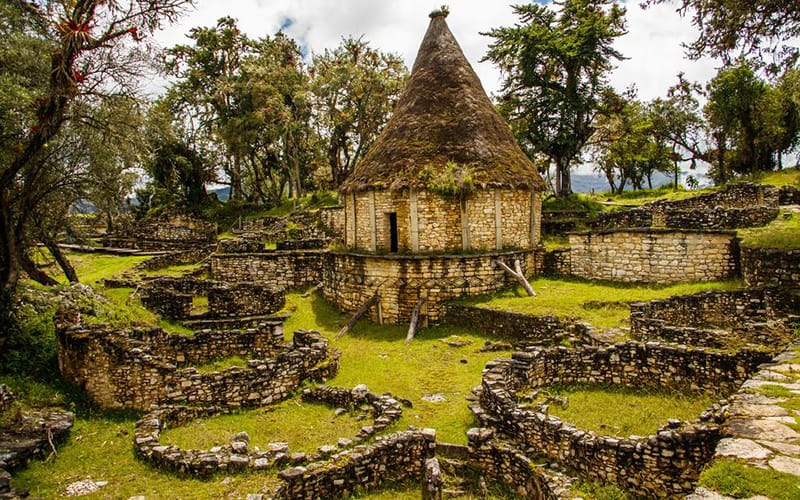
What to See in Northern Peru
What is so special about this alternative route through the North of Peru? Have a look at the sites that you will see:
- Lima: This is the typical starting point for travelers as they arrive in Peru. Despite common thought, the Peruvian capital definitely deserves a couple of days to see. Take some time to visit the hugely popular bars and clubs, and if that’s not your scene then Lima has some of Peru’s best museums, theaters, and art galleries. If you’re looking for fun, street art, and parties then visit the Bohemian neighborhood of Barranco, or if you just want a nice walk and a gorgeous view of the ocean then you can check out the popular Malecón (boardwalk) of Miraflores and explore the Parque del Amor, the Lighthouse and even discover a replica of the Nazca lines. Don’t miss the Plaza de Armas in the historical center, it is full of beautiful and important buildings. Once you’re ready, purchase your bus ticket towards Trujillo which should cost around s/70.
- Chiclayo: Well-known for its delicious food, make sure that you don’t miss your opportunity to sample some of the traditional North Peruvian cuisines like Arroz con Pato (rice with duck), Seco de Cabrito (local dish made of rice and goat) and ceviche made with freshly caught local fish. If what you’re looking for is an amazing day by the ocean, Pimentel Beach is the perfect place for you. Spend the day relaxing on the sand and swimming in the soft waves, head on to the pier and try your hand at fishing, or just stroll along the sands. Chiclayo is also home to some of the country’s most important archaeological sites. Often compared to the tomb of Tutankhamun, in Chiclayo you will find the tomb of the Lord of Sipán. After Chiclayo, it’s time to head to the highlands in Cajamarca .
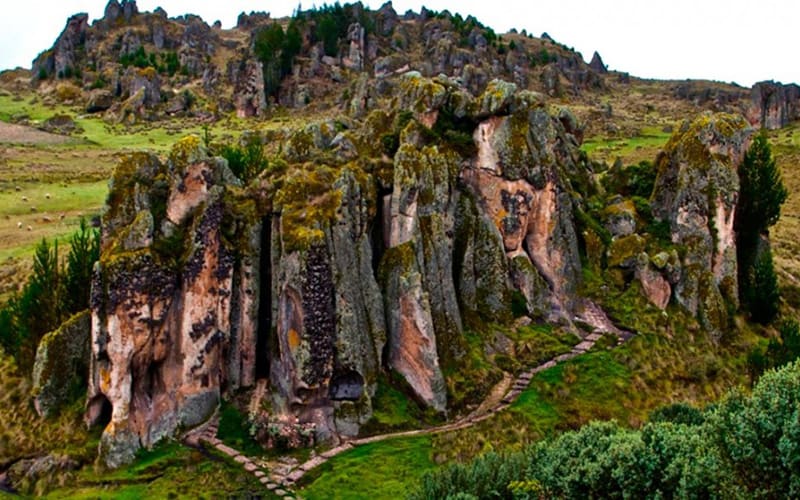
- Cajamarca: One of the most important cities in Northern Peru, Cajamarca is an excellent destination that is often overlooked by travelers. Cajamarca is a very historically important town, as it is where the last Inca was held and killed. The most popular time of the year to visit is during February for the city’s Carnaval festival. Other attractions to see in Cajamarca include the 6 Churches of Cajamarca, The Cumbemayo Stone Forest, Hot Springs in Baños del Inca, Ventanillas de Otuzco and Cuarto de Rescate (Ransom Room). Don’t forget to bring warm clothes as the weather can be very cold. The next stop will be the cloud forests of Chachapoyas.
- Chachapoyas: Named after a famous pre-Columbian civilization, Chachapoyas is a lovely historic town with wooden balconies, colonial style and safe streets. You will definitely enjoy its relaxed lifestyle, beautiful blue skies, and welcoming people. Make sure to visit Kuelap , a famous citadel of the Chachapoya people (often called the “Macchu Picchu of the North”). The Waterfall of Gocta, the Sarcophagi of Karajia and the Museum of Leymebamba are also must-see stops of Northern Peru. Finally, make sure to try the delicious artisanal bread and varieties of cheeses from this area. (check out our guide to the Amazon region for more info). From Chachapoyas, you will begin the descent into the jungle, heading to Moyobamba.
- Moyobamba: Heading into the Selva Alta , or high jungle, takes around 8 hours from Chachapoyas. You’ll arrive first in Moyobamba, known as the City of Orchids due to the wide variety of these flowers found there (see our guide to the San Martín region for more info). This jungle city deserves at least a couple of days, and it’s the perfect place to experience adventure, nature, and culture all in one place. Make sure to visit Aguas Termales de San Mateo (Hot Springs of San Mateo), natural pools with therapeutic properties. You can also go on jungle hikes to the Morro de Calzada or to visit numerous waterfalls. No list of things to do in Moyobamba would be complete without including the local food. Try the famous Avispa Juane (traditional jungle dish made of rice, ground beef, eggs, and chicken) or Inchicapy (green chicken soup with peanuts, cilantro, and yuca). Next, you can head further into the jungle to the city of Tarapoto.
- Tarapoto: Just 2 hours from Moyobamba, Tarapoto is one of the most popular destinations in Northern Peru. Well-known for its nightlife, year-round good weather and amazing attractions, you’ll fall in love with Tarapoto from the moment you step foot there. Visit Calle de las Piedras (Stones street) to have some fun and try exotic drinks or food. If you’re on the hunt for adventure sports, Ahuashiyacu Waterfalls is the perfect place for you. Laguna Sauce (or the Blue Lagoon) is your bucket list item to check off during your visit to Tarapoto. This huge blue lagoon has small boats available to rent and even tours available, so make sure to spend a full day in this hidden place. It’s recommended to spend at least two days in Tarapoto since there are many different places to visit. Next it’s time to head to the Selva Baja or lowland jungle in Iquitos .
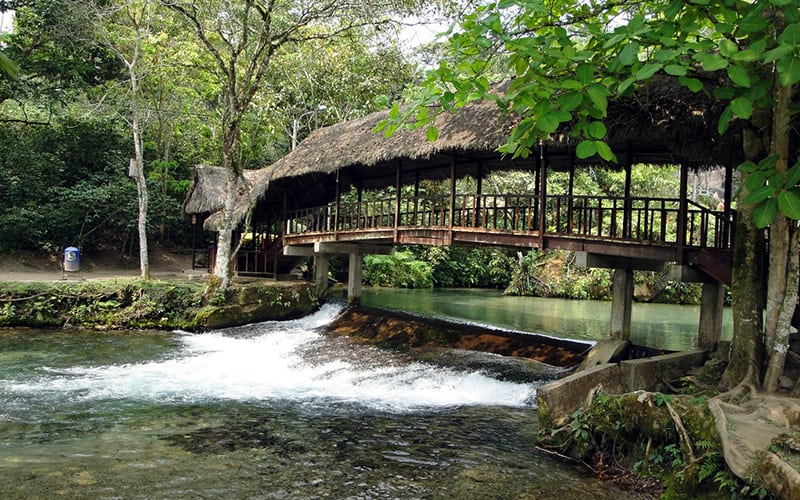
- Iquitos: This is one of the most famous places in Peru, and the largest city in the world that is not accessible by car. Because of this, the most common way to reach the city of Iquitos is by air, which takes just one hour. Alternatively, you can reach Iquitos by boat, sailing down the Amazon River and its major tributaries. To get to Iquitos by boat, you’ll need to get to the town of Yurimaguas which is accessible from Tarapoto by ground transport. From Yurimaguas, you’ll travel on the Marañon River before finally reaching the city of Iquitos. Here you’ll be able to experience some of the most amazing jungle scenery and wildlife in Peru, including butterflies, bats, jaguars, pink river dolphins, caimans, and monkeys. There are a number of excellent protected natural areas in the vicinity, including the pristine Pacaya-Samiria National Reserve. Ethno-tourists will relish in the chance to visit the indigenous settlement of Yaguas, a short boat ride from the town. If you’re seeking spiritual guidance, don’t miss the opportunity to try Ayahuasca.
The places mentioned above represent some of the best attractions in Northern Peru, with a large variety of different things to see and do. You will experience beautiful coastal beaches, misty cloud forests, the beautiful waterfalls of the high jungle, and the steamy lowland jungle all in one amazing trip.
Time Required for Northern Peru Itinerary
If you’re planning to do the complete tour, then three weeks is just about enough time to travel, as each city deserves at least two days to see the most important sights. On the other hand, if you choose to skip a couple of destinations or travel by air rather than bus, you can manage to see a lot of things in a week as well.
This Northern Peru itinerary is becoming more and more popular, for good reason! These cities are amazing tourist destinations, the route is easy to navigate and the tourist infrastructure is good. Keep in mind that as the tour goes ahead, you’ll experience the different kinds of Peruvian climate from frigid highlands to the sweltering jungle, so make sure to bring all the necessary appropriate clothing for the different types of weather.
What Are You Waiting For?
Follow this Northern Peru Itinerary to see some of the amazing sights of Northern Peru, from the coast to the highlands and jungle. You will soon discover for yourself why this alternative touristic route in Peru is getting more and more popular. What are you waiting for? Start planning your perfect dream trip to Northern Peru today!
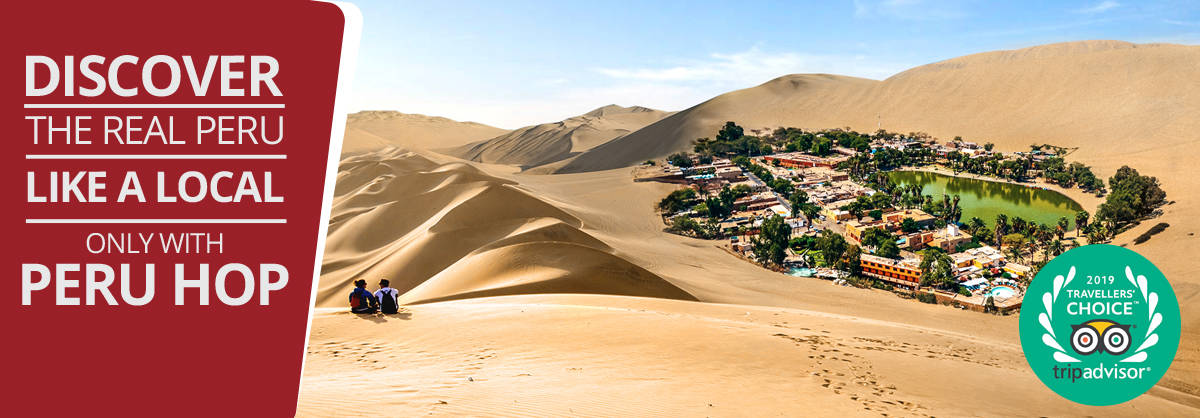
YOU MAY LIKE

Lima to Machu Picchu – Agencies DON’T want you to read this!

#1 Rated Day Trips From Lima To Unforgettable Destinations

Everything You Need to Know to Avoid the Typical Tourist Mistakes At Machu Picchu

What NOT To Do When Visiting Rainbow Mountain

Spend 50% less and see 100% more in Peru

Machu Picchu Tickets – All You Need To Know!

These Hidden Destinations Just Outside Of Lima Will Blow Your Mind!

Peru – How to Avoid Being a Typical Tourist

OFFICIAL: This Company Was Voted The Best Way To Get Around Peru

Peruvian Travel Secrets That Only The Locals Know
You must be logged in to post a comment.
Trujillo and the north Travel Guide
Book your individual trip , stress-free with local travel experts
Select Month
- roughguides.com
- South America
- trujillo-and-the-north
- Travel guide
- Itineraries
- Local Experts
- Travel Advice
- Accommodation
Plan your tailor-made trip with a local expert
Book securely with money-back guarantee
Travel stress-free with local assistance and 24/7 support
Northern Peru is packed with unique treasures – cultural, archeological and natural. Blessed with fewer tourists and better coastal weather than either Lima or the south (particularly in the high season – May to September), the area encompasses city oases along the coast, secluded villages in the Andes – where you may well be the first foreigner to pass through for years – and is brimming over with imposing and important pre-Inca sites, some of them only discovered in the last decade or two. For many, the biggest attraction will be the beautiful and trendy beaches. For others, it’s the scenery, archeology, and the opportunity to get off the beaten tourist trail.
Around Cajamarca
- Peru's Northern Desert
Trujillo is located on the seaward edge of the vast desert plain at the mouth of the Moche Valley. Its attraction lies mainly in its nearby ruins – notably Chan Chan and the huge, sacred pyramids of the Huaca del Sol and Huaca de la Luna – but also partly in the city itself, and some excellent, laidback outlying beach communities. Huanchaco , only 12km from Trujillo, is a good case in point, essentially a fishing village and a likeable resort within walking distance of sandy beaches and massive ancient ruins.
There are established bus touring routes through the Andean region above Trujillo, all of which present the option of winding through the beautifully situated mountain town of Cajamarca. It was here that Pizarro first encountered and captured the Inca Emperor Atahualpa, beginning the Spanish conquest of Peru. Cajamarca is also a springboard for visiting the smaller town of Chachapoyas and the ruined citadel complex of Kuelap, arguably the single most overwhelming pre-Columbian site in Peru. Beyond, there are possible routes down to Amazon headwaters and the jungle towns of Tarapoto and even Iquitos – long and arduous journeys.
The coastal strip north of Trujillo, up to Tumbes by the Ecuadorian border, is for the most part a seemingly endless desert plain, interrupted by isolated villages and new squatter settlements, but only two substantial towns, Chiclayo and Piura . Newly discovered archeological sites around Chiclayo possess some of the coast’s most important temple ruins, pyramids and nobles’ tombs, the latter containing a wealth of precious-metal ceremonial items, and there are some excellent regional museums such as the Museo de las Tumbas, based near Chiclayo. Northern Peru hosts a number of great beach resorts, such as Chicama and the warm seas of the hottest surf and beach scene in Peru at Máncora, located between Cabo Blanco and the border with Ecuador.
Travel ideas for Peru, created by local experts

8 days / from 2429 USD
Peru: into the Incan Empire
Who were the Incas? What did they do? What happened to them? Discover the answers, and much more, with this unique trip into the heart of the former Inca Empire.

8 days / from 2822 USD
Female Empowerment Tour
From meditations in Miraflores over visits to craftswomen in Chincheros to gratitude rituals in the Sacred Valley. This itinerary will allow you to reconnect with your feminine energy and learn more about women's lives in Peru.

19 days / from 3510 USD
Culture, Nature and Adventure in Peru
Get to know Peru through its locals and breathtaking trails- full of history. Hop aboard a motorboat to get to know the local way of life of the Uros people, before you start the great Inca trail, where beautiful landscapes, archaeological sites and fresh air are waiting for you.
Within a short distance of Cajamarca are several attractions that can easily be visited on a day-trip from the city. The closest is the Cerro Santa Apolonia, with its pre-Inca carved rocks, though these are not nearly as spectacular as the impressive aqueduct at Cumbe Mayo, or the ancient temple at Kuntur Huasi. However, the most popular trip from Cajamarca is to the steaming-hot thermal baths of Baños del Inca, just 5km from the city centre. A four-kilometre walk from Cajamarca lies the small village of Aylambo, known for its ceramics workshops, where you can try your hand at making your own pots.
Peru's Northern Desert
The northern desert remains one of the least-visited areas of Peru, mainly because of its distance from Lima and Cusco, the traditional hubs of Peru’s tourist trail, but it is still an invaluable destination for its distinctive landscape, wildlife, archeology and history.
Northern Peru has some excellent museums, besides the breathtaking coastal beauty of its desert environment, which itself contains the largest dry forest in the Americas, almost entirely consisting of algarrobo (carob) trees. The main cities of Chiclayo and Piura (the first Spanish settlement in Peru) are lively commercial centres, serving not only the desert coast but large areas of the Andes as well. If, like a lot of travellers, you decide to bus straight through from Trujillo to the Ecuadorian border beyond Tumbes (or vice versa) in a single journey, you’ll be missing out on some unique attractions.
The coastal resorts, such as the very trendy Máncora and Punta Sal, but also Cabo Blanco and, further south La Pimentel, the beach serving Chiclayo’s population, are among the best reasons for stopping: though small, they usually have at least basic facilities for travellers, and, most importantly, the ocean is warmer here than anywhere else in the country. The real jewels of the region, however, are the archeological remains, particularly the Valley of the Pyramids at Túcume and the older pyramid complex of Batán Grande, two immense pre-Inca ceremonial centres within easy reach of Chiclayo. Equally alluring is the Temple of Sipán, where some of Peru’s finest gold and silver grave-goods were found within the last fifteen years.
Batán Grande
The site at BATÁN GRANDE, 57km northeast of Chiclayo, incorporates over twenty pre-Inca temple pyramids within one corner of what extends to the largest dry forest in the Americas, the Bosque de Pomac. There’s an interpretative centre at the main entrance, which has a small archeological museum with a scale model of the site.
Part of the beauty of this site comes from its sitting at the heart of an ancient forest, dominated by algarrobo trees, spreading out over some 13,400 hectares, a veritable oasis in the middle of the desert landscape. Over ninety percent of Peru’s ancient gold artefacts are estimated to have come from here – you’ll notice there are thousands of holes, dug over the centuries by treasure hunters. Batán Grande is also known to have developed its own copper-smelting works, which produced large quantities of flat copper plates – naipes – that were between 5 and 10cm long. These were believed to have been used and exported to Ecuador as a kind of monetary system.
Brief history
The Sicán culture arose to fill the void left by the demise of the Mochica culture around 700 AD, and were the driving force in the region from 800 to 1100 AD, based here at Batán Grande. Known to archeologists as the Initial Lambayeque Period, judging by the beauty and extent of the pyramids here, this era was clearly a flourishing one. Nevertheless, Batán Grande was abandoned in the twelfth century and the Sicán moved across the valley to Túcume, probably following a deluge of rains (El Niño) causing devastation, epidemics and a lack of faith in the power of the ruling elite. This fits neatly with the legend of the Sicán leader Naymlap’s descendants, who evidently brought this on themselves by sacrilegious behaviour. There is also some evidence that the pyramids were deliberately burnt, supporting the latter theory.
The main part of the site that you visit today was mostly built between 750 and 1250 AD, and comprises the Huaca del Oro, Huaca Rodillona, Huaca Corte and the Huaca Las Ventanas, where the famous Tumi de Oro was uncovered in 1936. The tomb of El Señor de Sicán (not to be confused with the tomb of El Señor de Sipán), on the north side of the Huaca El Loro, contained a noble with two women, two children and five golden crowns; these are exhibited in the excellent museum in nearby Ferreñafe. From the top of these pyramids you can just about make out the form of the ancient ceremonial plaza on the ground below.
Bosque de Pomac
The National Sanctuary of the Pomac Forest is the largest dry forest in western South America. A kilometre or so in from the interpretative centre you’ll find the oldest algarrobo tree in the forest, the árbol milenario; over a thousand years old, its spreading, gnarled mass is still the site for pagan rituals, judging from the offerings hanging from its twisted boughs, but it’s also the focus of the Fiesta de las Cruces on May 3. In the heart of the reserve lies the Bosque de Pomac, where over forty species of bird such as mockingbirds, cardinals, burrowing owls and hummingbirds have been identified, and most visitors at least see some iguanas and lizards scuttling into the undergrowth. Rarer, but still present, are wild foxes, deer and anteaters. There’s also a mirador (viewing platform) in the heart of the forest, from where it’s possible to make out many of the larger huacas. Although there is hostel accommodation at the interpretative centre, it’s rarely available or open: you’ll have to turn up and chance it; there is a camping area outside, however. The café here, selling basic snacks, is not always functioning, so bring a picnic.
The old colonial town of LAMBAYEQUE, 12km from Chiclayo city, must have been a grand place before it fell into decay last century; fortunately, it seems on the road to recovery, helped by its popular museums and vibrant Sunday markets. Buildings worth seeing here include the early eighteenth-century lglesia de San Pedro, parallel to the main square between de Mayo and 8 de Octubre, which is still holding up and is the most impressive edifice in the town, with two attractive front towers and fourteen balconies.
Museo de las Tumbas Reales de Sipán
The Museo de las Tumbas Reales de Sipán, or Museum of the Royal Tombs of Sipán, is an imposing concrete construction in the form of a semi-sunken or truncated pyramid, reflecting the form and style of the treasures it holds inside. This mix of modernity and indigenous pre-Columbian influence is a fantastic starting-point for exploring the archeology of the valley. You’ll need a good hour or two to see and experience all the exhibits, which include a large collection of gold, silver and copper objects from the tomb of El Señor de Sipán, including his main emblem, a staff known as El Cetro Cuchillo, found stuck to the bones of his right hand in his tomb. The tomb itself is also reproduced as one of the museum’s centrepieces down on the bottom of the three floors. The top floor mainly exhibits ceramics, while the second floor is dedicated to El Señor de Sipán’s ornaments and treasures. Background music accompanies you around the museum circuit using instruments and sounds associated with pre-Hispanic cultures of the region. A musical finale can usually be caught on the ground floor.
The Lambayeque Valley has long been renowned for turning up pre-Columbian metallurgy – particularly gold pieces from the neighbouring hill graveyard of Zacamé – and local treasure-hunters have sometimes gone so far as to use bulldozers to dig them out; but it’s the addition of the Sipán treasures that’s given the biggest boost to Lambayeque’s reputation, and the museum is now one of the finest in South America.
The Sicán culture
The Sicán culture, thought to descend from the Mochica, is associated with the Naymlap dynasty, based on a wide-reaching political confederacy emanating from the Lambayeque Valley between around 800 and 1300 AD. These people produced alloys of gold, silver and arsenic-copper in unprecedented scales in pre-Hispanic America. The name Sicán actually means “House of the Moon” in the Mochica language. Legend has it that a leader called Naymlap arrived by sea with a fleet of balsa boats, his own royal retinue and a green female stone idol. Naymlap set about building temples and palaces near the sea in the Lambayeque Valley. The region was then successfully governed by Naymlap’s twelve grandsons, until one of them was tempted by a witch to move the green stone idol. Legend has it that this provoked a month of heavy rains and flash floods, rather like the effects of El Niño today, bringing great disease and death in its wake. Indeed, glacial ice cores analyzed in the Andes above here have indicated the likelihood of a powerful El Niño current around 1100 AD.
The Sicán civilization, like the Mochica, depended on a high level of irrigation technology. The civilization also had its own copper money and sophisticated ceramics, many of which featured an image of the flying Lord of Sicán. The main thrust of the Lord of Sicán designs is a well-dressed man, possibly Naymlap himself, with small wings, a nose like a bird’s beak and, sometimes, talons rather than feet. The Sicán culture showed a marked change in its burial practices from that of the Mochica, almost certainly signifying a change in the prevalent belief in an afterlife. While the Mochica people were buried in a lying position – like the Mochica warrior in his splendid tomb at Sipán – the new Sicán style was to inter its dead in a sitting position. Excavations of Sicán sites in the last decade have also revealed such rare artefacts as 22 “tumis” (semicircular bladed ceremonial knives with an anthropomorphic figure stabbing where a handle should be).
The Sicán monetary system, the flying Lord of Sicán image and much of the culture’s religious and political infrastructures were all abandoned after the dramatic environmental disasters caused by El Niño in 1100 AD. Batán Grande, the culture’s largest and most impressive city, was partly washed away and a fabulous new centre, a massive city of over twenty adobe pyramids at Túcume, was constructed in the Leche Valley. This relatively short-lived culture was taken over by Chimu warriors from the south around 1370 AD, who absorbed the Lambayeque Valley, some of the Piura Valley area and about two-thirds of the Peruvian desert coast into their empire.
The site of TÚCUME, also known as the Valley of the Pyramids, contains 26 adobe pyramids, many clustered around the hill of El Purgatorio (197m), also known as Cerro La Raya (after a ray fish that lives within it, according to legend), and is located some 33km north from Chiclayo. Although the ticket office closes at 4.30pm and the museum shortly after this, the site is accessible after these hours (being part of the local landscape and dissected by small paths connecting villages and homesteads), with the main sectors clearly marked by good interpretative signs.
Túcume’s modern settlement, based alongside the old Panamerican Highway, lies just a couple of kilometres west of the Valley of the Pyramids, and doesn’t have much to offer visitors except a handful of accommodation and eating options.

Tucume © Shutterstock
Covering more than two hundred hectares, Túcume was occupied initially by the Sicán culture, which began building here around 1100 AD after abandoning Batán Grande. During this time, known as the Second Lambayeque Period, the focus of construction moved to Túcume where an elite controlled a complex administrative system and cleared large areas of algarrobo forest (as is still the case today in the immediate vicinity of the Valley of the Pyramids and Cerro El Purgatorio at Túcume). Reed seafaring vessels were also essential for the development of this new, powerful elite. The Sicán people were clearly expert seamen and traded along the coast as far as Ecuador, Colombia and quite probably Central America; to the east, they traded with the sierra and the jungle regions beyond. They were also expert metallurgists working with gold, silver, copper and precious stones, and their elaborate funerary masks are astonishingly vivid and beautiful.
At Túcume’s peak, in the thirteenth and early fourteenth centuries, it was probably a focus of annual pilgrimage for a large section of the coastal population, whose Sicán leaders were high priests with great agro-astrological understanding, adept administrators, a warrior elite, and expert artisans.
It wasn’t long, however, before things changed, and around 1375 AD the Chimu invaded from the south. Within another hundred years the Inca had arrived, though they took some twenty years to conquer the Chimu, during which time it appears that Túcume played an important role in the ensuing military, magical and diplomatic intrigues. Afterwards, the Inca transported many Chimu warriors to remote outposts in the Andes, in order to maximize the Incas’ political control and minimize the chances of rebellion. By the time the Spanish arrived, just over half a century later, Túcume’s time had already passed. When the Spanish chronicler, Pedro Cieza de León, stopped by here in 1547, it was already in ruins and abandoned.
Today, Túcume remains an extensive site with the labyrinthine ruins of walls and courtyards still quite visible, if slightly rain-washed by the impact of heavy El Niño weather cycles, and you can easily spend two or three hours exploring. The site has two clearly defined sectors: North is characterized by the large monumental structures; while the South has predominantly simpler structures and common graveyards. The adobe bricks utilized were loaf-shaped, each with their maker’s mark, indicating control and accounting for labour and tribute to the elite. Some of the pyramids have up to seven phases of construction, showing that building went on more or less continuously.
El Purgatorio hill
There’s a viewing point, reached by a twisting path that leads up El Purgatorio hill, from where you can get a good view of the whole city. This hill, circular and cone-shaped, at the very centre of the occupied area, was and still is considered by locals to be a sacred mountain. Access to it was restricted originally, though there is evidence of later Inca constructions, for example an altar site. It is still visited these days by the local curanderos, healing wizards who utilize shamanic techniques and the psychoactive San Pedro cactus in their weekly rituals, which researchers believe are similar to those of their ancestors and which could be one possible explanation for the name El Purgatorio (the place of the purge).
Museo di Sitio
The Museo de Sitio, at the entrance to the site, has exhibits relating to the work of Thor Heyerdahl, who found in Túcume the inspiration for his Kon Tiki expedition in 1946 when he sailed a raft built in the style of ancient Peruvian boats from Callao, near Lima, right across the Pacific Ocean to Polynesia, as he tried to prove a link between civilizations on either side of the Pacific. The museum also covers the work of archeologist Wendell Bennett, who in the late 1930s was the first person to scientifically excavate at the site. More esoterically, Túcume has a local reputation for magical power, and a section of the museum has been devoted to a display of local curanderismo. There’s also an attractive picnic area, and a ceramic workshop where they use 2500-year-old techniques. The museum was constructed to reflect the style – known as la ramada – of colonial chapels in this region, built by local indigenous craftsmen centuries ago and using much the same materials.
Túcume Viejo
Although there are no tourist facilities as such, the Túcume ruins in the village of Túcume Viejo, less than 2km from Lambayeque, make for an interesting walk. Although an ancient site, check out the crumbling colonial adobe walls and a once-painted adobe brick gateway as well as the church, all of which have an elegant and rather grandiose feel, suggesting perhaps that the early colonists were trying to compete for attention with the Valley of the Pyramids.
About 30km from the Ecuadorian border and 287km north of Piura, TUMBES is usually considered a mere pit-stop for overland travellers, offering decent restaurants and better money-changing options than at the Ecuadorian frontier. However, the city has a significant history and, unlike most border settlements, is a surprisingly warm and friendly place. On top of that, it’s close to many of Peru’s finest beaches and two very distinct and unique forests and protected areas: the Santuario Nacional los Manglares de Tumbes and the Zona Reservado de Tumbes. The settlement of Zorritos is strung out along the seafront and Panamerican Highway some 28km south of Tumbes; as well as a long beach, this town is the point of access to some ancient, still-working natural mud baths.
The area can get very hot and humid between December and March, while the rest of the year it offers a pleasant heat, compared with much of Peru’s southern coast. The sea is warm and while mosquitoes can be bothersome between September and January, they rarely make their presence felt on the beaches. Locals tend to be laidback and spontaneous, a trait reflected in the local traditions such as las cumananas, an expression in popular verse, often by song with a guitar. The verse is expected to be sparky, romantic, comical and even sad, but most importantly, spur of the moment and rap-like.
Pizarro didn’t actually set foot in Tumbes when it was first discovered by the Spanish in 1527. He preferred to cast his eyes along the Inca city’s adobe walls, its carefully irrigated fields and its shining temple, from the comfort and safety of his ship. However, with the help of translators he set about learning as much as he could about Peru and the Incas during this initial contact.
The Spaniards who did go ashore made reports of such grandeur that Pizarro at first refused to believe them, sending instead the more reliable Greek cavalier, Pedro de Candia. Dubious descriptions of the temple, lined with gold and silver sheets, were confirmed by Candia, who also gave the people of Tumbes their first taste of European technological might – firing his musket to smash a wooden board to pieces. Pizarro had all the evidence he needed; he returned to Spain to obtain royal consent and support for his projected conquest.
The Tumbes people hadn’t always been controlled by the Incas. The area was originally inhabited by the Tallanes, related to coastal tribes from Ecuador who are still known for their unusual lip and nose ornaments. In 1450 they were conquered for the first time – by the Chimu. Thirteen years later came the Incas, organized by Tupac Inca, who bulldozed the locals into religious, economic and even architectural conformity in order to create their most northerly coastal terminus. A fortress, temple and sun convent were built, and the town was colonized with loyal subjects from other regions – a typical Inca ploy, which they called the mitimaes system. The valley had an efficient irrigation programme, allowing them to grow, among other things, bananas, corn and squash.
Pizarro longed to add his name to the list of Tumbes’ conquerors, yet after landing on the coast of Ecuador in 1532 with a royal warrant to conquer and convert, and despite the previous friendly contact, some of the Spanish were killed by natives as they tried to beach. Moreover, when they reached the city it was completely deserted with many buildings destroyed, and, more painfully for Pizarro, no sign of gold. It seems likely that Tumbes’ destruction prior to Pizarro’s arrival was the result of inter-tribal warfare directly related to the Inca Civil War. This, a war of succession between Atahualpa and his half-brother, the legitimate heir, Huascar, was to make Pizarro’s role as conqueror a great deal easier, and he took the town of Tumbes without a struggle.
Discover more places in Peru
- Chachapoyas and around
The Rough Guides to Peru and related travel guides
In-depth, easy-to-use travel guides filled with expert advice.

Find even more inspiration here

Planning your own trip? Prepare for your trip
Use Rough Guides' trusted partners for great rates
written by Rough Guides Editors
updated 10.05.2021
Ready to travel and discover Peru?
Get support from our local experts for stress-free planning & worry-free travels.
- Where to stay
- Travel advice
Join my Adventure: There's Room in My Backpack
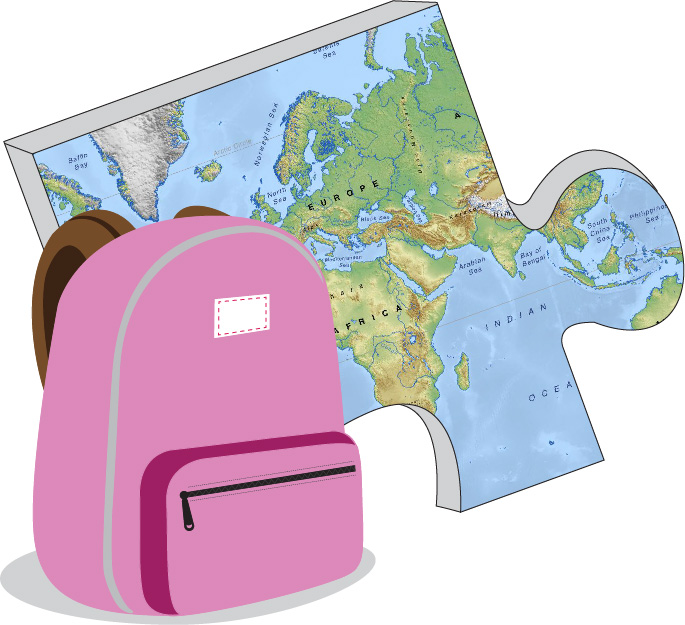
Packing up the Pieces

5 Amazing Places to Add to a North Peru Itinerary
When most people travel to the incredible country of Peru, they often head straight to the capital city of Lima or the enchanting colonial city of Cusco with its nearby Inca ruins ; however, the entire north of the country is usually completely overlooked. There are so many reasons to add to your bucket-list a north Peru itinerary.
Peru’s northern region is absolutely stunning and very much slighted. Expect to experience the country’s most laid back beaches, epic waterfalls, rainforest, and stellar Pre-Inca ruins. Hike through the beautiful mountain ranges of the Cordillera Blanca and relax in healing thermal baths.
Yes, Machu Picchu is special and the Sacred Valley is stunning, but if you’ve got the time and are looking for something a little more intrepid, head to the north of Peru.
Here are 5 worthwhile cities to add to your north Peru itinerary and all the awesome things to do while visiting them.
Table of Contents
Mancora | north peru beach town, chachapoyas | welcome to the cloud forest, cajamarca | under-appreciated historical city, trujillo | temples & ruins, oh my, huaraz | hiker’s dream.
Long stretches of grainy beach. A surfer’s delight. Fresh seafood with sand in your toes. This best sums up the laid-back beach town of Mancora . While the city is mostly sleepy during the day, at night, the restaurants and bars fill with partying tourists living life to the fullest until wee hours of the morning.
Along the main boardwalk, find a plethora of modern cafes and restaurants serving up fresh seafood, ceviche, and sushi.
The main city beach can seem a little dirty and worn, so it’s best to head out of town to discover picturesque white sand beaches.
Why Add Mancora to Your North Peru Itinerary?
Mancora makes an excellent combination of partying and relaxing, soaking up the sun and catching waves, all while eating savory goodies fresh from the sea!
With it’s close-ish proximity to the border, Mancora makes a great “stop-over” for those either coming from, or going to, the overlooked country of Ecuador.
Psst… If heading into Ecuador, it’s easy to hop on a bus and head to the lovely colonial city of Cuenca .
Where to Sleep in Mancora
There’s a wide range of accommodation in Mancora, from party hostels to cute little bungalows, and many of these accommodations boast a pool.
Party animals will want to stay at the well known hostel, Wild Rover . Another popular hostel choice with a pool is Loki del Mar with a lively bar and restaurant.
Solo travelers who are looking for something a little bit more quiet will love the quaint and clean bungalow style rooms of the AquamarInn .
Stunning cloud forests. A well preserved Pre-Inca fortress. Waterfalls that make you feel like you’re in the movie “Up.” Chachapoyas is an unmissable city on any north Peru itinerary.
Why Add Chachapoyas to Your North Peru Itinerary?
Not only is the city of Chachapoyas totally adorable, but there are some awesome day trips and points of interest that can be reach via this city.
Mirador del Cañon de Huancas Sonche
Just a short bus ride away in the village of Huancas, visit the incredible viewpoint of Huancas Canyon. There are collectivos that depart frequently to this lookout only a few blocks away from the main plaza in Chachapoyas.
Logistics | Entrance Fee: 3 PEN (85¢ USD) | Hours: 9:00 – 17:00
Chachapoyas is the name of the civilization who inhabited the region before the Incas. There is little known about these mysterious people, but they were known as the “Cloud Warriors.”
Kuelap is one of the most important lost cities that remains from this civilization. It is literally built in the cloud forest and sits just shy of 10,000 feet. During its prime, it is believed that over 3,000 inhabitants called Kuelpa their home. Surprisingly, there are over 400 structures that are still partially standing. Today, Kuelap is considered one of the largest stone ruins of the “New World.”
As of 2017, Kuelap is as accessible as ever. A cable car has been built to whisk tourists from the village of Tingo Nuevo to the archaeological park in 20 minutes.
Logistics | Entrance Fee to Kuelap: 20 PEN ($5.50 USD) | Hours: 8:00 – 18:00 | Cable Car Round-Trip Ticket: 20 PEN, catch it from the village Tingo Nuevo
Gocta Falls
Hiking to Gocta Falls literally feels like a scene stolen from Pixar’s movie “Up.” The two tiered waterfall towers over 2,500 feet and is surrounded by the lush rainforest scenery. Take the most common path from the village of Cocachimba , and walk to the actual foot of the falls. It takes around 2 hours to arrive one way. Gocta falls is an absolute highlight of a north Peru itinerary.
Logistics Cocachimba to Falls | Entrance Fee: 10 PEN ($2.75 USD) | Duration: 2 – 3 hours each way | There are multiple ways to reach Gocta Falls and plenty of trails to explore
Where to Sleep in Chachapoyas
A one-stop sleeping shop is Chachapoyas Backpackers Hostel . Located near the center of the city, this modest hostel offers laundry service, has a kitchen, and organizes tours. What’s awesome is they are happy to help independent travelers plan their own itineraries. Chachapoyas Backpackers also offers private rooms.
➜ Find the best Chachapoyas Hotels, Guesthouses, and Hostels
Unexplained ruins. Healing thermal waters. Interesting colonial buildings. Cajamarca is a worthwhile city that warrants at least a day or two stopover on a north Peru itinerary.
Why Add Cajamarca to Your North Peru Itinerary?
The main attraction of Cajamarca is the bizarre rock forest of Cumbemayo and the peculiar aqueduct caved perfectly into the stones. There are also diverse stone carvings etched into the rocks. Some believe this site was home to a very advanced Pre-Inca civilization that inhabited the area before 1500 B.C., maybe even way before that.
This archaeological park sits above the city of Cajamarca and can be visited independently or with a tour. Pack a flashlight because it’s possible to climb through some of the narrow caves. Due to the fact that this region is still not on the tourist radar, a majority of the tours are in Spanish.
Logistics | Entrance Fee to Cumbemayo: 8 PEN ($2 USD) | Hours: 9:00 – 17:00 | Average Tour Cost: 30 PEN ($7.50 USD) | Can hike from Cajamarca (4 hours each way)
If interested in ancient tombs, close to Cajamarca find the Ventanillas de Otuzco . This old burial ground was raided and looted by the Spanish conquistadors.
Logistics | Entrance Fee: 5 PEN ($1.50 USD) | Hours: 8:00 – 18:00
Just on the outskirts of town are the relaxing Baños del Inca. These baths have some history. Supposedly in 1533, the Inca emperor Atahualpa was enjoying a soak when the Spanish army showed up. Today, these baths are public facilities. There’s an option to relax in a private room in a giant tub, and I mean a tub fit for a queen. These thermal waters are said to be of volcanic origin and can induce total relaxation.
Logistics | Hours: 5:00 – 22:00 | Private Baths start at 6 PEN for 30 minutes | Add-Ons Available , like massages
✔ Love Hot Springs? 14 Hot Springs in Peru You Have to Visit
Where to Sleep in Cajamarca
House Chakra is a laid back hostel with nice common spaces that feels more like a guesthouse than a hostel. For those looking for a little splurge, try Hotel & Spa Laguna Seca , which boasts its own thermal water pools and is actually located in the nearby community of Baños del Inca.
Adobe ruins. Pyramid temples. Sunset strolls along the beach. Trujillo is an up and coming destination to add on a north Peru itinerary. Chan Chan , an ancient adobe city, is putting this beachside destination on the map. Built by the Chimor empire, it is believed this city had over 40,000 inhabitants. Another civilization, the Moche, left behind two temples, Huaca de la Luna y Huaca del Sol. The adobe remains are decorated in murals that probably, in their prime, were absolutely spectacular. Of course, if looking for something a little more relaxing, enjoy one of the many beaches. One of the more popular backpacker beaches, Huanchaco , is less than an hour north from Trujillo.
Trujillo is a nice way to break up the two mountainous regions of Cajamarca and Huaraz.
Jagged mountain ranges. Vivid colored alpine lakes. One of Peru’s finest National Parks. Huaraz is the ultimate gateway to the stunning Cordillera Blanca mountain range. This section of mountains is just a smaller mountain range that makes up the mighty Andes. The city of Huaraz sits over 10,000 feet and offers incredible day hikes to the nearby mountains.
No north Peru itinerary is complete without a day hike in Huascarán National Park.
✈ Peru Travel Planning | 32 Unique & Famous Landmarks in Peru to Visit
The most popular day trek of the Cordillera Blanca has to be Laguna 69 . The hike itself is around 4 miles and isn’t too challenging; however, it’s the lake’s altitude at over 15,000 feet that is the most shocking factor!
The bright turquoise alpine lake is seriously incredible to gaze upon. The beauty of the lake is enhanced by the snowy glacial peaks and small trickling waterfalls that encompass it. The two hour hike each way is more than worth it. Along the route, look for bouncing chinchillas and grazing cows. This route has mountains for days and interesting waterfalls that flow along the rocky cliffs.
Laguna 69 is only one of many alpine lakes which are found in Huascarán National Park.
Logistics | Huascarán National Park 1 Day Fee: 30 PEN ($7.50 USD) | Catch an early morning collectivo from Yungay to the trailhead
Laguna Paron
It’s a long day in multiples collectivos, but Laguna Paron can be done as a day trip from Huaraz. The trail to the lake can be tedious and mundane, as it follows along a dusty road frequented by tour buses. The reward at the end of the road is another vivid turquoise blue lake surrounded by mountains. The lake sits at an altitude of 13,780 feet and is part of Huascarán Park; however, the entrance fee is far less to visit this lake.
Logistics | Lake Entrance Fee: 5 PEN ($1.50 USD) | Catch the FIRST Collectivo to Caraz and on to Pueblo Paron
Huaraz as a Starting Point for Multi-Day Treks
On top of these day treks, Huaraz is the gateway to some pretty epic multi-day treks. A popular route is the 4 day Santa Cruz trek that begins in the village of Vaqueria . One of the most top-ranked multi-day treks in the entire world sits a few hours to the south of Huaraz, the 12 day Huayhuash circuit. This trek weaves through the Cordillera Huayhuash and begins near the village of Llámac.
Where to Sleep in Huaraz
Tony’s House Hostel is an awesome family run guesthouse that offers shared and private rooms and a large fenced-in yard to pitch a tent. Carla, the hostess with the mostess, is super friendly and helpful when planning day outings. Enjoy a home-cooked breakfast with mountains in the backdrop while her two pups play in the yard.
In short, the north of Peru is often overlooked and skipped by many travelers. On your north Peru itinerary, make sure to include the cities of Mancora, Chachapoyas, Cajamarca, Trujillo, and Huaraz.
The diverse north prides itself on coast lines of beaches, rainforests, cloud forests, waterfalls, towering mountains, and alpine lakes. Don’t forget about the many distinctive ancient civilizations that left behind cities in the clouds, unexplainable architectural feats, and massive adobe cities. The north of Peru has a wide range of things to see and do that most travelers will simply skip over. Now that you know of the beauty, try to add at least one of these incredible cities to your north Peru itinerary.
Have you visited any of the above cities in the north of Peru? Hopefully this list has encouraged you to include northern Peru on your bucket-list for Peru! Are there any cities that you visited in the north of Peru that are not on this list and you absolutely loved? Will you add these spots to your north Peru itinerary? Let me know in the comments below what you think!
Disclaimer: There’s a chance this post contains affiliate links, and I receive a small (but grateful) portion of the sale. There’s no extra cost to you, and I only promote things that I use and love.
Hey, my name is Megs! I'm an adventure-seeking, wanna-be storyteller, with a wandering soul who is smitten with the diversity of this beautiful world. You can find me hiking in the mountains, eating delicious food, and seeking out the most authentic travel experiences possible. Experiences and memories are my most prized possessions. I love to slow travel and have been nomadic for over 12 years.
Similar Posts

The 3 Best & Most Charming Day Trips from Sibiu

14 Best Day Trips from Oaxaca & How to Visit
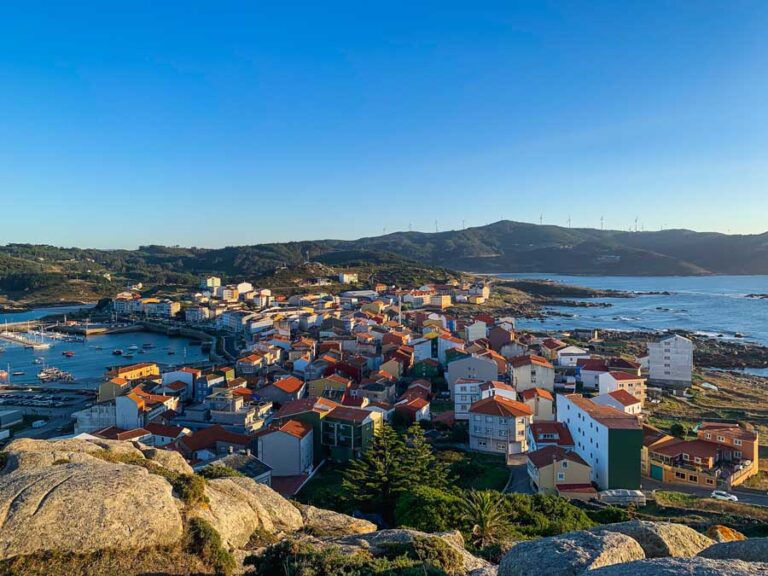
Visiting Muxia Spain | A Magical Village in Galicia

Poznan Itinerary | 3 Days Discovering Poland’s Colorful City

Laguna Juchuycocha: A Hidden Alpine Lake in Sacred Valley

10 Awesome Things to Do in Iquique Chile
22 comments.
Peru has always been one of my dream destinations and the north looks absolutely stunning! Makes me wanna go now even more! Thanks for shedding light on these hidden gems 🙂
Peru is magic, the hype is real! I hope you get to visit in the near future! 💙
I have never been to Peru but all these North Peru places look very beautiful, especially Huaraz, and I would like to visit them.
I only spent a few days in Huaraz, so I can’t wait to get back and see more! It really is a stunning part of the country. 🙃
I spent 2 weeks in Peru a few years ago and of course it wasn’t nearly long enough. I can’t wait to go back and visit each of these places in North Peru. They all look incredible. The ruins, hikes and lakes are epic!
Peru is really so special, I hope you make it back in the near future!! There is so much diversity, even from region to region. 💚
Wow, the blue of those lakes is incredible! I went to Peru in 1998, so this is making me think it’s definitely time I went back… just as soon as we can travel again!
It’s one of those places that keeps drawing travelers back. I hope you make it in the near future! 🇵🇪
I’ve been wanting to visit Peru for a while now and I’m excited to add these places to my list now!
Obsessed with your photos! Makes me want to visit Peru even more. saving this for my future trip there!
Thanks Talia, Enjoy! 💙
Northern Peru sounds like an absolute gem! Probably a good thing that’s it’s not on the itinerary of packaged tours and you get to feel like an explorer. The archeological park at Cajamarca sounds fascinating. It’s such a shame that we don’t know anything about such advanced civilizations that were building aqueducts before the Romans. And the alpine lakes at Huaraz National Park are a dream. Thank you for putting this part of the country on my radar!
Thanks, Margarita! I know the Pre-Inca civilizations are super fascinating, and sadly overlooked… North Peru is worth the effort!🗿
Such gorgeous vistas – absolutely a beautiful country to visit and I love how you have strayed away from the touristy towns and focused on the rest of the places. Incredible travel guide for someone looking to step out to travel to Peru
Thank you so much Shalzmojo!💙
Everyone talks about Machu Picchu and Lima. Its so refreshing to see your pictures and hear about Northern Peru. I’ve love to visit when travel resume.
Thanks, Jyoti! I agree, Machu Picchu takes center stage, but Peru has so many incredible treasures that are just waiting to be explored! 🥾
Wow! These places all look amazing. I visited Peru a few years ago but didn’t make it to this part of the country but it looks stunning. The waterfalls & colour of those lakes would definitely draw me back. Thanks for putting the North on my map for next time!
Thanks, Sue! Peru is simply amazing, isn’t it?! 🇵🇪
Hi Megs, it’s so smart of you to stay on in Peru and explore in 2020. You’ve covered such hidden gems and regions one hardly hears about. I had never heard of these circular ruins. It’s been 17 years since our visit. I have to go again. This time, I’d love to get all your tips before going.
Thanks Jyoti! I have tons of resources on Peru, many I am still working on! There is so much diversity and amazing things to see there. I hope you make it again in the near future, the people, places, culture, and history are all so magical and special. Thanks for reading and your kind words!! 🌱💛
Leave a Reply Cancel reply
Your email address will not be published. Required fields are marked *
Save my name, email, and website in this browser for the next time I comment.
Dos Manos Peru Travel
Dos Manos Peru Travel Blog
Exploring peru, plan a trip to northern peru.

While most travelers head straight for Cusco, Arequipa, Lake Titicaca, and Machu Picchu in southern Peru, northern Peru is still a hidden gem for travelers to venture off the beaten path . In Northern Peru, you will find amazing ruins with hardly any other people around, discover unique landscapes, and learn about ancient pre-Inca cultures in Peru. “El norte” is a multicultural and colorful destination full of contrasts with a fascinating, diverse culture, history, geography, biodiversity, and gastronomy, from the coastal lands of the capital city to Lima up to Trujillo, crossing the Andes Mountain Range by Cajamarca up to the Peruvian Amazon. Northern Peru offers a wide range of things to do and see . Let’s plan a trip to Northern Peru!

Most likely, you will arrive in the capital city of Lima y plane (or cross the borders when traveling overland to Peru from Ecuador. From Lima, you can take a flight to Trujillo or Cajamarca (a flight of approximately one hour and a half) and start your trip in Northern Peru!
Here is a brief overview of some of the top things to see and do in this beautiful area to Plan a trip to Northern Peru:
What to do in Northern Peru
- Visit the ruins of Chavín de Huantar , an ancient ceremonial center and UNESCO World Heritage site that dates back to 900 BC.
- Take a tour of the Tucume Pyramids , a group of 26 adobe pyramids built by the Lambayeque culture.
- Explore the beautiful coastal city of Trujillo , known for its colonial architecture and beaches. Some of the top sights to see here include the Plaza de Armas, the Cathedral of Trujillo, and the Chan Chan Archaeological Zone , another UNESCO World Heritage site. Read more below.
- Head to the city of Cajamarca in the Andes mountains, the place of the Inca emperor Atahualpa’s capture by the Spanish conquistadors in the 16th century. Cajamarca is also home to several colonial-era buildings and hot springs. Read more below.
- Take a day trip to the Kuelap ruins , a pre-Inca fortress in the Chachapoyas region . The fort is known for its circular stone walls and many underground tombs. Read more below.

- Visit the Gocta Waterfall , the third-highest waterfall in the world, located in the Amazon rainforest near the town of Chachapoyas .
- Take a boat trip on the Maranon river , which is one of the main tributaries of the Amazon, to see the diverse range of wildlife in the area.
When planning your trip to Northern Peru , remember that northern Peru can be pretty hot during the day, especially in the coastal regions, so it’s best to plan your activities for the early morning or late afternoon.
Additionally, some sites and activities, such as the Kuelap and Gocta Waterfall , are located in remote and mountainous areas, so be prepared for rugged terrain and possible altitude sickness or soroche . If you have been to cities like Cusco , Arequipa, or Machu Picchu before traveling to the north, you should still be acclimatized.

How to visit Kuélap in Peru
Kuélap is a pre-Inca fortress located in the Chachapoyas region of northern Peru. The fort is known for its circular stone walls and many underground tombs. To visit Kuélap, here are some tips:
- Getting there : To reach Kuélap, you’ll first need to fly to the city of Chiclayo , Cajamarca, or Tarapoto, all of which have airports that receive flights from Lima. From there, you can take a bus or private car to the town of Chachapoyas, the closest city to Kuélap. Finally, you can take a bus or taxi from Chachapoyas to the village of Tingo, where the fortress is located.
- Best time to visit : The best time to visit Kuélap is during the dry season, which runs from April to November. During the rainy season, which runs from November to April, the road to the fortress can be more challenging to navigate, and the fort may be closed.
- Entrance fee : Entrance fee for Kuélap is US$12 for foreign adults and US$6 for students
- Guided tours : It is recommended to take a guided tour of Kuélap as the guide will provide you with information about the site’s history and architecture and take you to the most exciting parts of the fortress not allowed to access without a guide. You can arrange the tour in Chachapoyas or book a Kuélap Tour with a tour agency or travel agent in advance
- Altitude and Physical condition : Keep in mind that Kuélap is located at an altitude of about 3,000 meters (9,800 feet) above sea level, so you may experience some symptoms of altitude sickness such as headache, shortness of breath, and fatigue. Make sure to take it easy, rest often, and drink plenty of water to stay hydrated. And also, keep in mind that Kuélap is an ancient site built on the mountain; it may need some physical effort to climb and visit the site.
- Safety : As Kuélap is located in a remote area, take the necessary precautions to ensure your safety. Let someone know your itinerary, and bring a fully charged cell phone and emergency contact information. It’s also a good idea to wear comfortable shoes and appropriate clothing for the weather.
Visiting Kuélap is a unique and worthwhile experience of your trip to Peru you will enjoy a lot.

What to see in Cajamarca
Cajamarca is a charming city located in the Andes mountains of northern Peru. It is known for its rich history and beautiful colonial architecture.
Here are some of the top sights to see while visiting Cajamarca:
- Plaza de Armas: This is the main square in the city and a great place to start your visit. The square is surrounded by beautiful colonial-era buildings, including the Cathedral of Cajamarca and the Palacio de la Real Audiencia.
- Ransom Room (Cuarto del Rescate): This is where the Inca emperor Atahualpa was held captive by the Spanish conquistadors in the 16th century. Inside the room, you can see the famous “Ransom Room,” where the legendary Inca gold and silver were kept to get the Atahualpa release.
- Baños del Inca: This ancient Inca bath complex is still in use today. The hot springs here are believed to have healing properties, and you can take a dip in the pools while enjoying the beautiful surroundings.
- Cajamarca’s archaeological sites: There are a few Inca and pre-Inca ruins around the city, like the Ventanillas de Otuzco and the Cerro Santa Apolonia.
- Belen Church: This beautiful church is located in the city’s heart and is a great place to see some of Cajamarca’s colonial architecture. The church is also known for its intricate wood carvings.
- The handicrafts market: Cajamarca is known for its traditional textiles, ceramics, and handicrafts; you can find some of the best examples of these at the local markets, like the famous handicraft market on Calle Real.
- Surrounding area: The city of Cajamarca is surrounded by beautiful Andean landscapes, and there are many opportunities to explore the area with one-day excursions, visiting the Porcon Lake, hot springs, and many more.
Cajamarca is a great place to visit and offers a variety of cultural and historical experiences. It is known for its charming colonial architecture, rich history, and beautiful scenery. There are also many great restaurants and cafes in the city where you can try some of the local cuisine.
What to do in Trujillo and surroundings
Trujillo is a beautiful coastal city in northern Peru with a rich history and culture. Plan a trip to Northern Peru and check out some of the top things to see and do in Trujillo and its surroundings:
- Plaza de Armas: This is the main square in Trujillo and a great place to start your visit. The square is surrounded by beautiful colonial-era buildings, including the Cathedral of Trujillo and the Palacio de la Merced.
- Chan Chan Archaeological Zone : This is the largest pre-Columbian city in South America and a UNESCO World Heritage site located about 20 kilometers west of Trujillo. The town was built by the Chimu culture and is known for its intricate adobe structures and carvings.
- Huaca del Sol y la Luna: These are two ancient Moche pyramids outside Trujillo. The Huaca del Sol is the most extensive adobe construction in the Americas. The Huaca de la Luna is known for its intricate murals.
- The Royal Tombs of Sipan: This is an archaeological site located about 60 kilometers northwest of Trujillo, where the tombs of the Moche elite have been uncovered, it is considered one of the most important archaeological discoveries of South America, and it is a must-see for history and archaeology enthusiasts.
- El Brujo Archaeological Complex: This site is located about 70 kilometers northwest of Trujillo and was built by the Moche culture. It contains several pyramids, plazas, and murals. It is also famous for its Lady of Cao, a Moche mummy found here, which is now part of the National Museum of Anthropology collection in Lima.
- Peruvian Beaches : Trujillo is known for its beautiful beaches, like Huanchaco , the famous surfing spot, and the nearby beaches like El Estero, where you can go for a relaxing day in the sun.

- The Historical Centre of Trujillo: Declared a World Heritage Site by UNESCO, is a rich and beautiful place where you can see a lot of colonial architecture and take a walk around, visiting the traditional houses and churches of the city.
- Local Peruvian Food: Trujillo is known for its seafood and ceviche, especially the famous “ceviche de conchas negras” (black shells ceviche) and other traditional dishes like “arroz con pato” (rice with duck) and “chanchito al horno” (oven-roasted pork).
Trujillo offers a great variety of things to do and see, from ancient ruins and colonial-era architecture to beautiful beaches and delicious local cuisine. The city and its surroundings are rich in history and culture, and there’s plenty to explore for history, archaeology, and culture enthusiasts.
Overall, northern Peru offers a wide variety of cultural and natural experiences, from ancient ruins and colonial-era architecture to beautiful beaches, hot springs, and waterfalls.
Do you need help planning your trip to Northern Peru? We’d love to help you Plan a trip to Northern Peru!
Feel free to contact Dos Manos Peru Travel .
Wil je dit artikel ook in het Nederlands lezen? Plan een reis naar Noord-Peru
Leave a Comment Cancel Reply
Your email address will not be published. Required fields are marked *
Save my name, email, and website in this browser for the next time I comment.
- Destinations
- North Coast
North Coast, Peru
The North Coast of Peru is the Egypt of South America—it has a dry climate and once hosted iconic ancient leaders who built temples, pyramids and empires. This area is now home to spectacular historical sites and large colonial cities. Travelers also enjoy its beautiful beaches, stellar surf sports, and high-quality seafood restaurants.
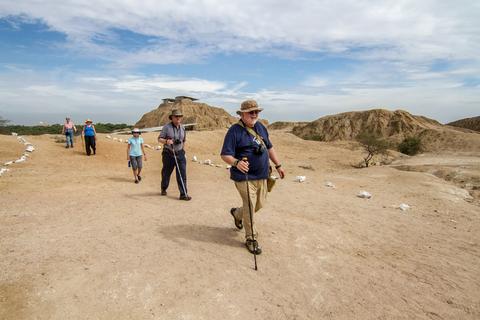
From the Moche Valley to the Tucume Valley, the Lambayeque region to the Piura region, this part of Peru is characterized by a different climate and geography than the rest of the coast. The North Coast has a tropical dry climate, with the desert landscape broken by the occasional tropical dry forests full of thorny trees or carob and huayacan trees.
This tropical savannah is Peru's richest archaeological region, full of ancient temples, pyramids, and tombs. Discoveries have revealed incredible treasures such as the Lord of Sipan tomb, Chan Chan, the El Brujo Complex, and much more. The region was the epicenter of the Moche, Sican and Chimu kingdoms, which were highly sophisticated civilizations. The area's colonial past can be seen in Peru's second largest city, Trujillo. This elegant town has colorful mansions, detailed churches, and a vibrant culture.
Running along the Pan-American Highway from Lima all the way to Ecuador, Peru's north coast is strung with beaches that are bursting with golden sunlight and awesome surf spots. The oceanfront resorts of Máncora attract the jet set, while smaller hideaways such as Punta Sal and Cabo Blanco offer up seclusion next to the Pacific Ocean. Huanchaco, Lobitos, Máncora, and Puerto Chicama attract international surfers, while nature lovers head farther north to explore the crocodile sanctuary and mangrove forests.
The North Coast is also famous for its seafood. Combined with rice, limes and mangoes, this region offers tasty traditional lunches and dinners. The whole area is also blessed with fewer tourists and better coastal weather than either Lima or the south coast.
For some travelers, the biggest attraction to this region will be the beautiful beaches and surf. For others, it's the scenery, archaeology, and the off-the-beaten-path feel. Any way you look at it, the North Coast of Peru is a great place to visit.
Personalized Trips for North Coast , Peru
Expert Choice Make this family vacation worth the effort –– explore Peru. Lima and Machu Picchu (MaPi) are just the start of the exciting locations and adventures awaiting you.
Where to go in North Coast , Peru
The most seamless way to plan


Peru’s Northern Coast
Peru’s Northern Coast is rightly referred to as a cradle of nations. Throughout the pre-Inca millennia, waves of cultures flourished here. Curiously, compared to the Inca sites of Southern Peru, the North’s ancient cities receive few visitors, allowing the intrepid few to explore in relative privacy.
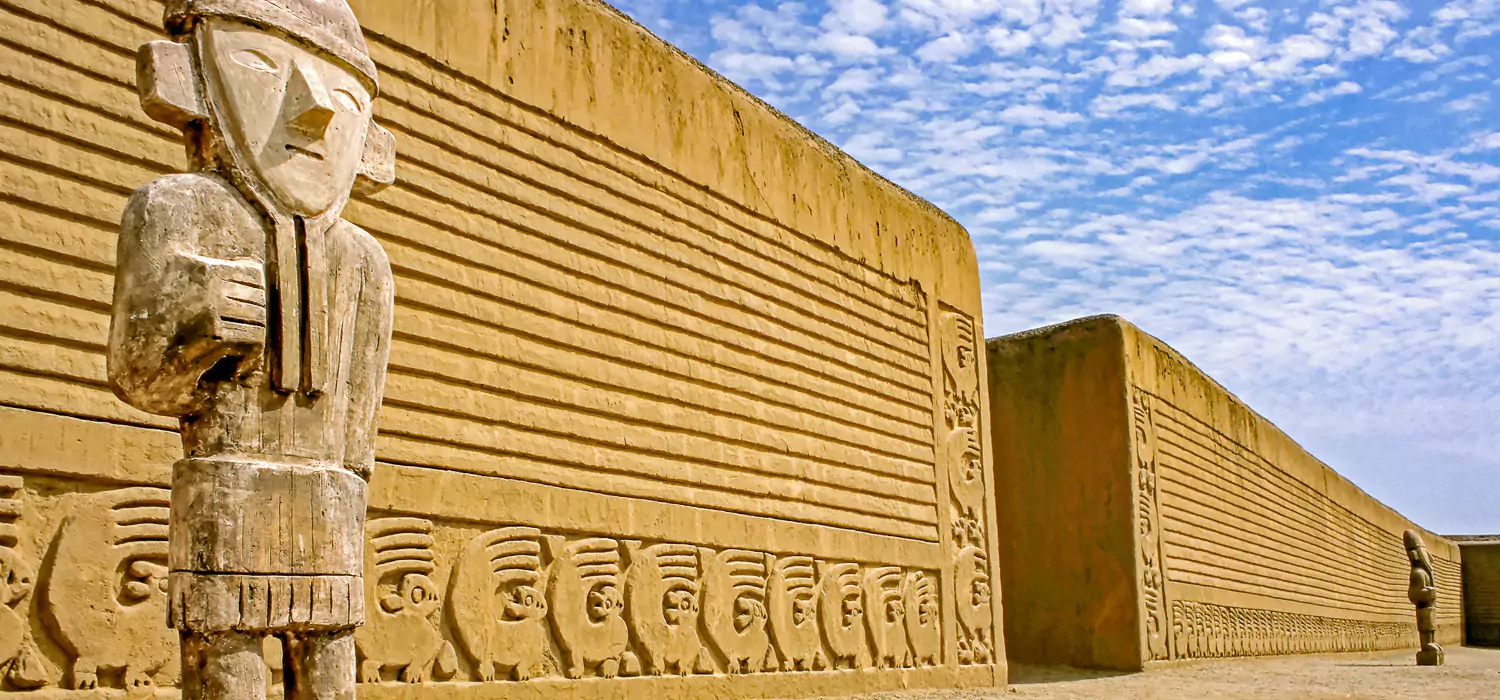
Chan Chan’s Urban Core
At its zenith, Chan Chan’s urban core—divided into ten citadels—covered more than two square miles, much of which was surrounded by adobe walls fifty to sixty feet high. The surrounding settlements filled nearly eight square miles and supported an estimated 30,000 residents.
Most visitors to the site tour a group of three walled plazas known as the Tschudi Complex.
Twenty minutes from Trujillo and not far from Chan Chan, the village of Huanchaco is famous for its traditional fishing techniques. Fishermen straddle small boats—caballitos de totora—made from bound reeds, a design that reportedly dates back 3,000 years.
Temple of the Sun and Temple of the Moon
To the southeast of Chan Chan, two enormous adobe pyramids tower over the surrounding landscape—the Temple of the Sun and the Temple of the Moon. These monuments of the Moche culture were constructed between the first and eighth centuries.
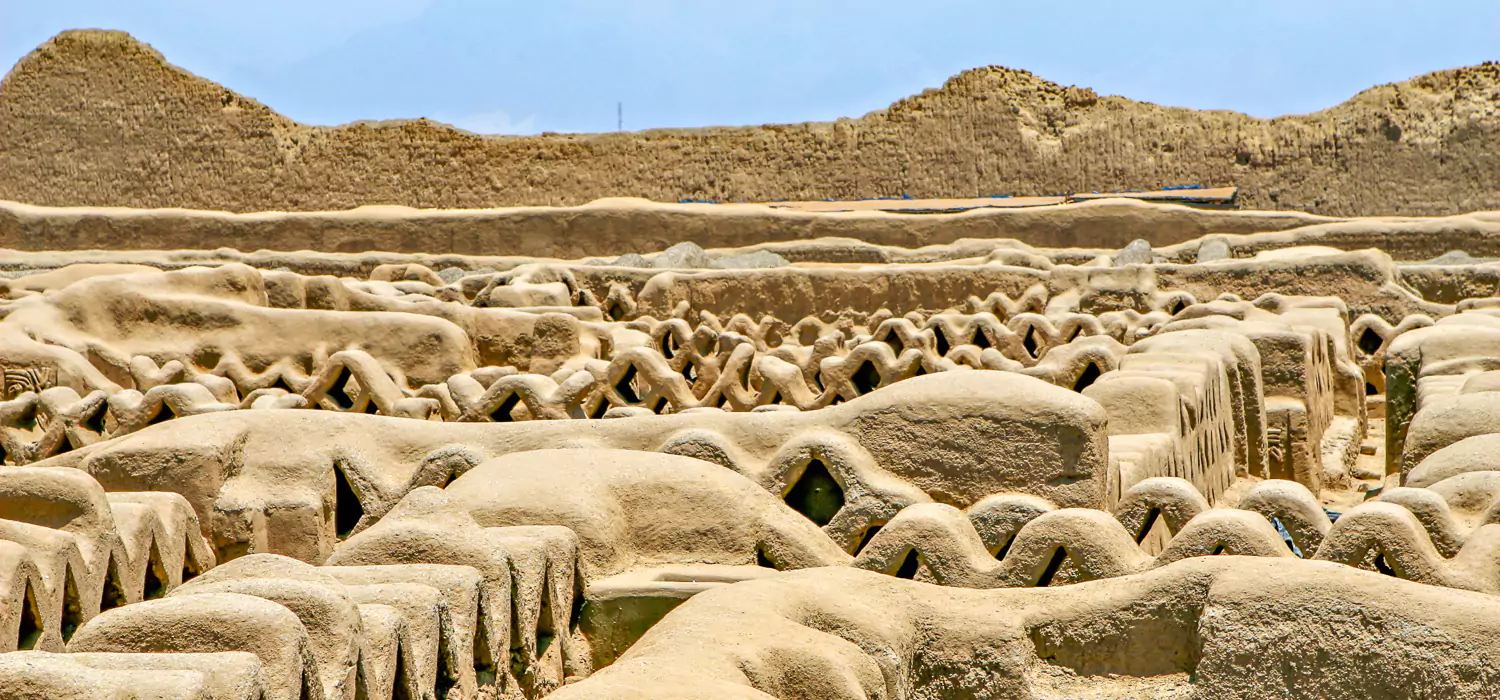
Huaca de la Luna
Huaca de la Luna is decorated with multicolored friezes, one of which covers nearly an entire side of the pyramid. Approximately 160 miles to the north, near the town of Chiclayo, lies the ancient Moche burial site of Sipan, or Huaca Rayada.
The site was excavated in the late 1980s, unearthing a royal tomb filled with gold and silver jewelry. The tomb of this “Lord of Sipan” and reproductions of its contents are displayed in situ.
North of Sipan, sits an area known as Túcume—a 540-acre site containing 26 major adobe pyramids and platforms built by the Sican. Constructed on a plain around La Raya Mountain, the site was originally settled around 800 AD.
Our Favorite Hotels

Casa Andina Standard Trujillo
What to do trujillo.
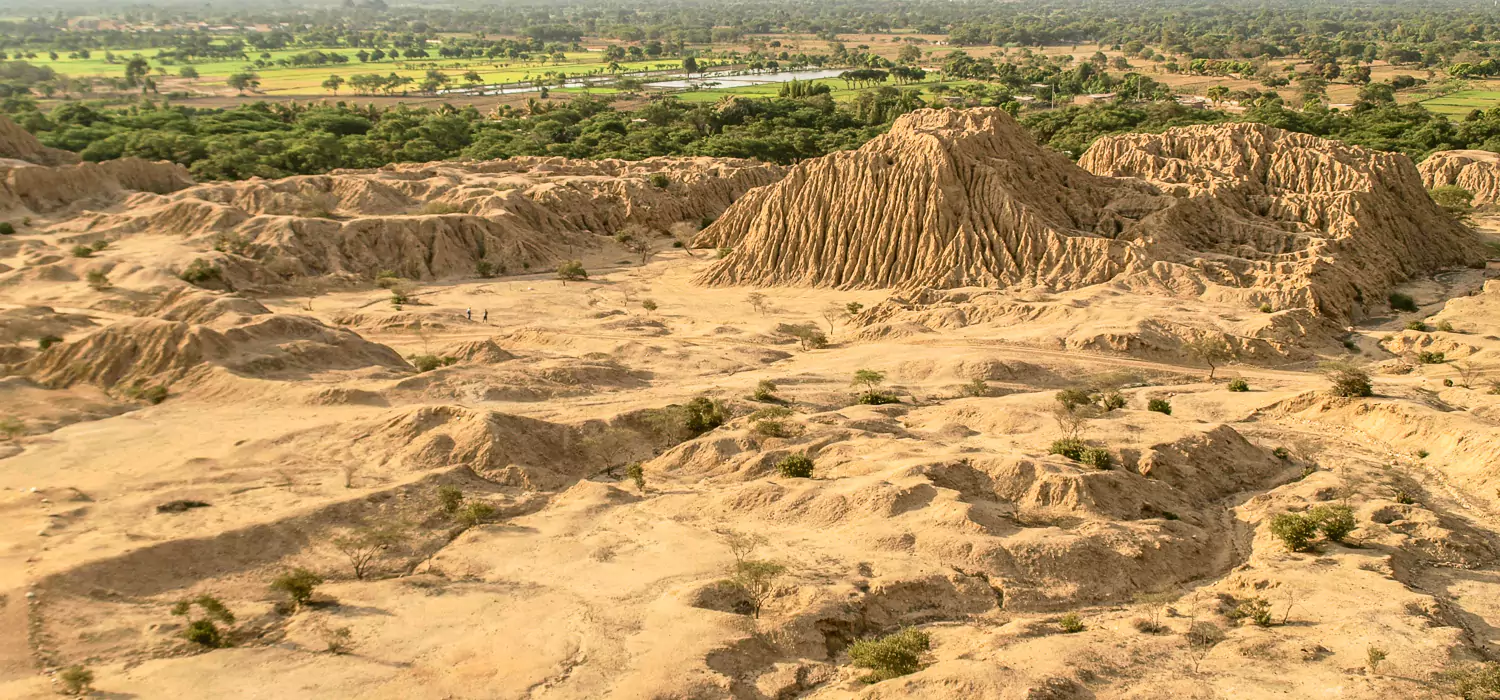
What is the Weather Like?
Trujillo and Chiclayo have pleasant weather year-round, enjoying a hot desert climate. The yearly average maximum temperature in Trujillo is 75°C. November till April see some rain with March being the rainiest month.

Getting There
Trujillo can be reached by air from Lima in just over an hour. Flights from the capital reach Chiclayo in about 90 minutes.
Start your journey today
LANDED delivers the finest in custom, private travel to Central America, South America, and Antarctica. These regions are our passion; we know them first-hand and by heart. Speak with one of our travel designers and let us create a tailored itinerary for you in Peru’s North Coast.
How to combine The North Coast
Have some extra time? Here are some options for you to combine with

Machu Picchu

The Sacred Valley
Travel inspiration.


landed.travel
LANDED: the finest in private, tailor-made travel to Latin America and Antarctica. Smile. You’ve LANDED 🛬 www.landedtravel.com

The 13 most incredible places to visit in Peru

Nov 10, 2023 • 9 min read
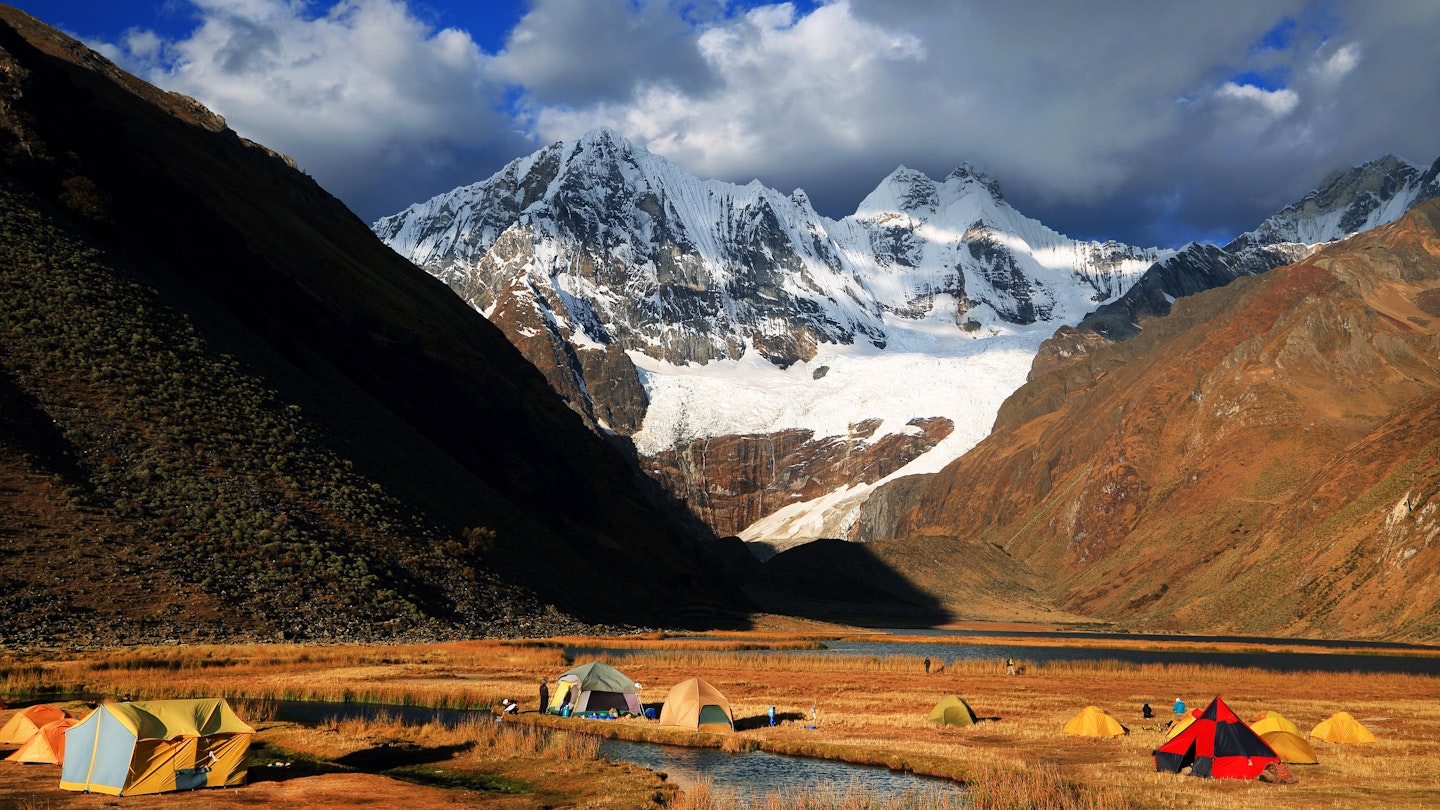
Peru packs in plenty of adventures across its varied geography © Mikadun / Shutterstock
Touted for its gastronomy, revered for its cultural legacies and marveled for its biodiversity, Peru is a land worthy of multiple visits – how else would you be able to see, taste and do it all?
With landscapes ranging from mountains and jungle to sea, Peru has activities and experiences that are as varied as its terrain. From sky-high Inca ruins to remnants of pre-Hispanic civilizations once buried beneath desert sands, these are the best places to visit in Peru .

1. Machu Picchu
Best for trekking
One of the New Seven Wonders of the World and Peru’s greatest claim to tourism fame, Machu Picchu lives up to its hype as a mystical and awe-inspiring 15th-century archaeological site. Built with incredible precision, attention to detail and at the great height of 2430m (7972ft) above sea level, Machu Picchu includes temples, private quarters and ceremonial platforms that continue to radiate sacred energy. Machu Picchu, meaning “old peak” in the Indigenous Quechua language of the Andes, can be reached by a two-hour train ride from the Sacred Valley town of Ollantaytambo, or the truly intrepid can walk in the footsteps of the Incas along the classic Inca Trail, a four- to five-day trek that traverses 42km (26 miles).
Local tip: The weather at Machu Picchu seems to have only two settings: heavy rain or bright, burning sunlight. Don’t forget rain gear and sunblock.

Best for desert explorers
It is mind-boggling how few tourists make it to the ancient city of Caral , built around 5000 years ago and impressively conserved. Located in the high desert of the Supe Valley, a 3½-hour car ride from the capital city of Lima, the Unesco World Heritage Site predates ceramic pottery and the Incas. It is the key to the beginning of Andean culture, a visible shift from separate tribes to a shared urban community. With a guide, visitors can stroll through what was once a complex city of the Norte Chico culture, consisting of mud-brick amphitheaters, ceremonial rooms, circular plazas and the remains of six pyramids: remnants of urban planning and agricultural practices that would greatly influence subsequent cultures in Peru.
Best for archaeology enthusiasts
In the Amazonas region of northern Peru, a walled settlement known as Kuélap has stood among the clouds since the 7th century. Built by the Chachapoyas culture (referred to as “Cloud Warriors”), the fortress is often called the Machu Picchu of the North, despite its higher elevation of 3000m (9842ft) above sea level and the fact that it predates the Inca citadel by at least 500 years. Hundreds of circular structures are spread across the site, making it one of the largest sites of stone ruins in the Americas.
Planning tip: Getting to Kuélap is now easy in a day trip from Chachapoyas. Cable cars drop off visitors at the top.
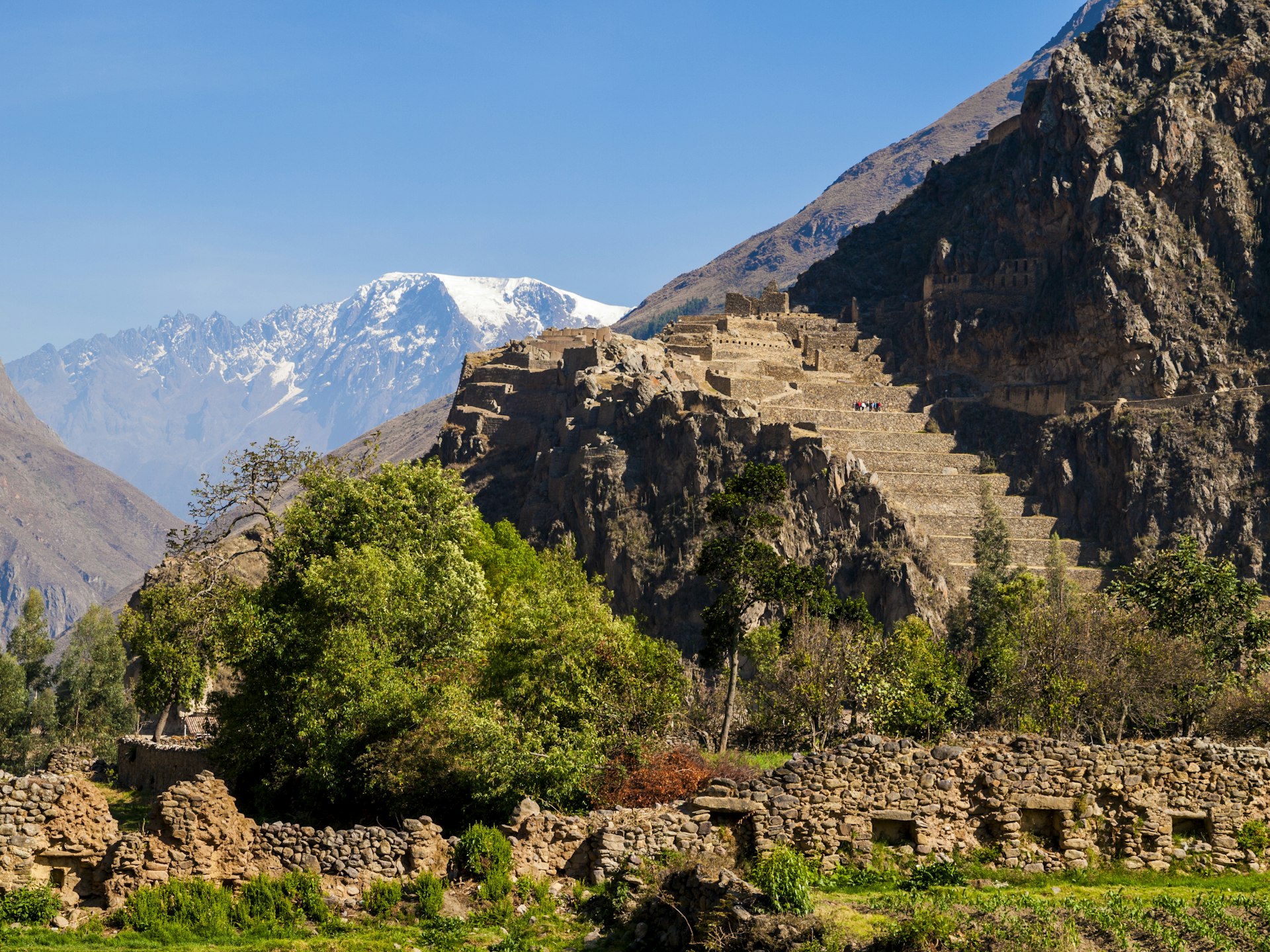
4. The Sacred Valley
Best for handicrafts
The heart of the Inca Empire, the Sacred Valley (Valle Sagrado) is indeed the gateway to Machu Picchu, but what rushed travelers often overlook are the villages cradled within the valley that are home to lesser-known archaeological sites, first-rate artisan workshops and living cultures of the Peruvian highlands. An hour's drive from Cusco, the bohemian town of Pisac boasts its own hilltop Inca citadel and one of the best handicraft markets in the region. To the northwest is Urubamba , a hub for adventure tourism, including rock climbing, trekking and downhill biking. The neighboring village of Ollantaytambo is home to the eponymous Inca fortress.
Local tip : Recent years have seen an influx of expats and New Agers to Pisac in search of an Andean Shangri-la. The local tourism industry has responded with everything from yoga retreats and cleanses to guided hallucinogenic trips.

Best for mountaineering
Defined by Cordillera Blanca, one of the most impressive mountain ranges in the world, Huaraz is Peru’s capital of mountaineering. The town itself is rather low-key, but it is home base for a number of outdoor excursions, which makes Huaraz a must-visit destination. Verdant valleys give way to the snowy summits of the Cordillera, accessorized with jade lakes and pristine springs. Experienced trekkers set their sights high to reach the 6768m (22,205ft) summit of Huascarán, a three-week journey. Meanwhile, day trips to sites like Laguna Churup are satiating for beginner or time-constrained adventurers.

6. Arequipa
Best for colonial-era architecture
Known as Peru’s White City for its unique colonial-era architecture crafted from volcanic rock ( sillar ), Arequipa is one of the most visually stunning cities in the country. Just beyond the chalky structures of the main plaza are deep-hued testaments to the city’s past, such as the blue and red Monasterio de Santa Catalina , built in 1579 and vibrant picanterías (traditional lunchtime restaurants). On the outskirts of the volcano-framed city is the Ruta del Sillar (Volcanic Rock Route), showcasing the material’s extraction, production and the lives of the workers. Witness the breathtaking flight of the giant Andean condor from the brink of Cañón Del Colca (Colca Canyon), one of the world’s deepest canyons and a top trekking destination in Peru.

7. Lake Titicaca
Best for getting out on the water
Separating Bolivia and Peru, Lake Titicaca was a sacred body of water to the Incas. In fact, Andean mythology often points to the high-altitude lake as the place of origin of the first Inca, Manco Capac, and his wife, Mama Ocllo. A geological wonder, Lake Titicaca lies at 3810m (12,500ft) above sea level, making it the highest navigable body of water in the world. Glide out to the floating reed islands that dot the lake to meet the Uros people, who live a fascinating life committed to the preservation of Indigenous handicrafts and fishing. Tourism is incredibly important for this community and some families offer homestays.
Local tip: Bring warm layers if you plan to stay out on deck. Three types of boats ply these waters. Veloz (high-speed speedboats), lancha rápida (speedboats) and embarcaciones artesanales (traditional boats) , which take twice as long as the speedboats.

8. Choquequirao
Best for intrepid hikers
Can you imagine having Machu Picchu to yourself? Full of history, challenging hikes and privileged views, Choquequirao is often described as a mini Machu Picchu, but not for its size. At least twice as large as the famed Inca citadel and similar in structure, Choquequirao can only be considered diminutive in terms of visitor numbers. A minimum four-day round-trip of steep climbs filters out many potential visitors, leaving only the most intrepid of hikers. At an elevation of 3050m (10,010ft), much of Choquequirao remains buried by thick jungle foliage. To reach this high-elevation gem with few other visitors is like stumbling upon hidden treasure, or as its name means in Quechua, a “cradle of gold.”
Planning tip: Bring a water filter – the water found along the way is not potable. Fill up when you can as water sources are infrequent.
9. Oxapampa
Best for the unexpected
A jungle town founded by Austrian and German colonists in the 19th century, Oxapampa is a unique visit with unexpected architecture and local food. Just beyond the main plaza and the Tyrolean architecture are lush mountainsides ideally explored by foot or bike. A bit farther away is Yanachaga-Chemillén National Park . A new wave of residents, largely from Lima, arrived in the past decade, resulting in new sustainable tourism ventures and greater impulse to continue Selvámonos , an annual music and culture festival.
Planning tip: An 80km (50-mile) bus ride away lies Pozuzo, Oxapampa’s smaller yet older neighboring town, which hosts its own version of Oktoberfest, called Pozuzofest .
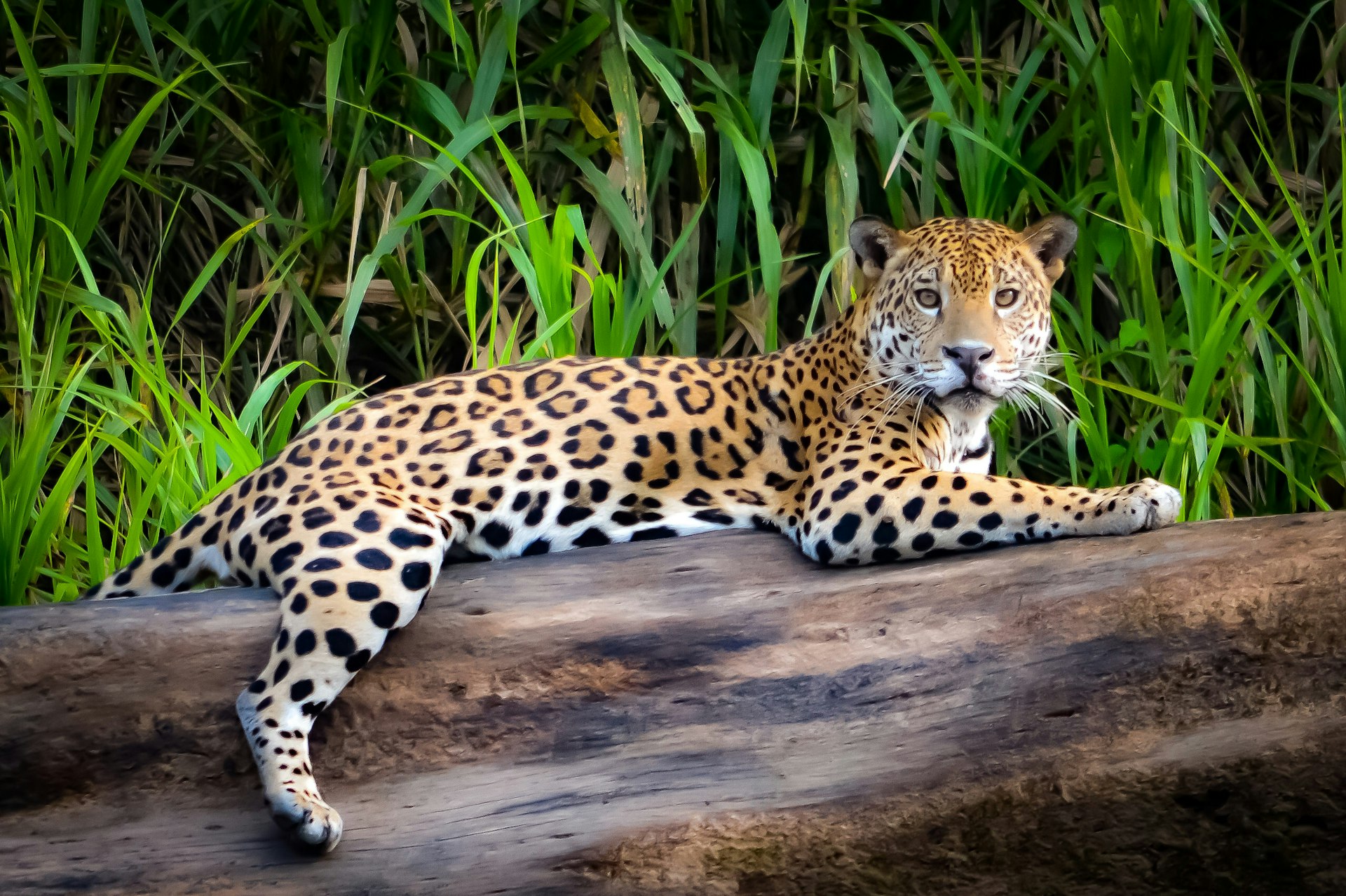
10. Puerto Maldonado
Best for wildlife
Capital of the southern Amazon rainforest, Puerto Maldonado offers easy access to prime, wildlife-rich jungles in Peru. From here, visitors can venture into the Tambopata National Reserve , one of the last few pristine areas in the rainforest. Spread over 2745 sq km (1060 sq miles) and marked by lakes, rivers and forest, the protected area is one of the most biodiverse destinations on the planet, boasting thousands of butterfly species as well as hundreds of varieties of birds, mammals and plants. Located in the Madre de Dios region, Puerto Maldonado is a 1½-hour flight from Lima. Popular with travelers of all ages, the city is far more laidback than its bustling cousin up north, Iquitos, making it more attractive for families and an extended stay.
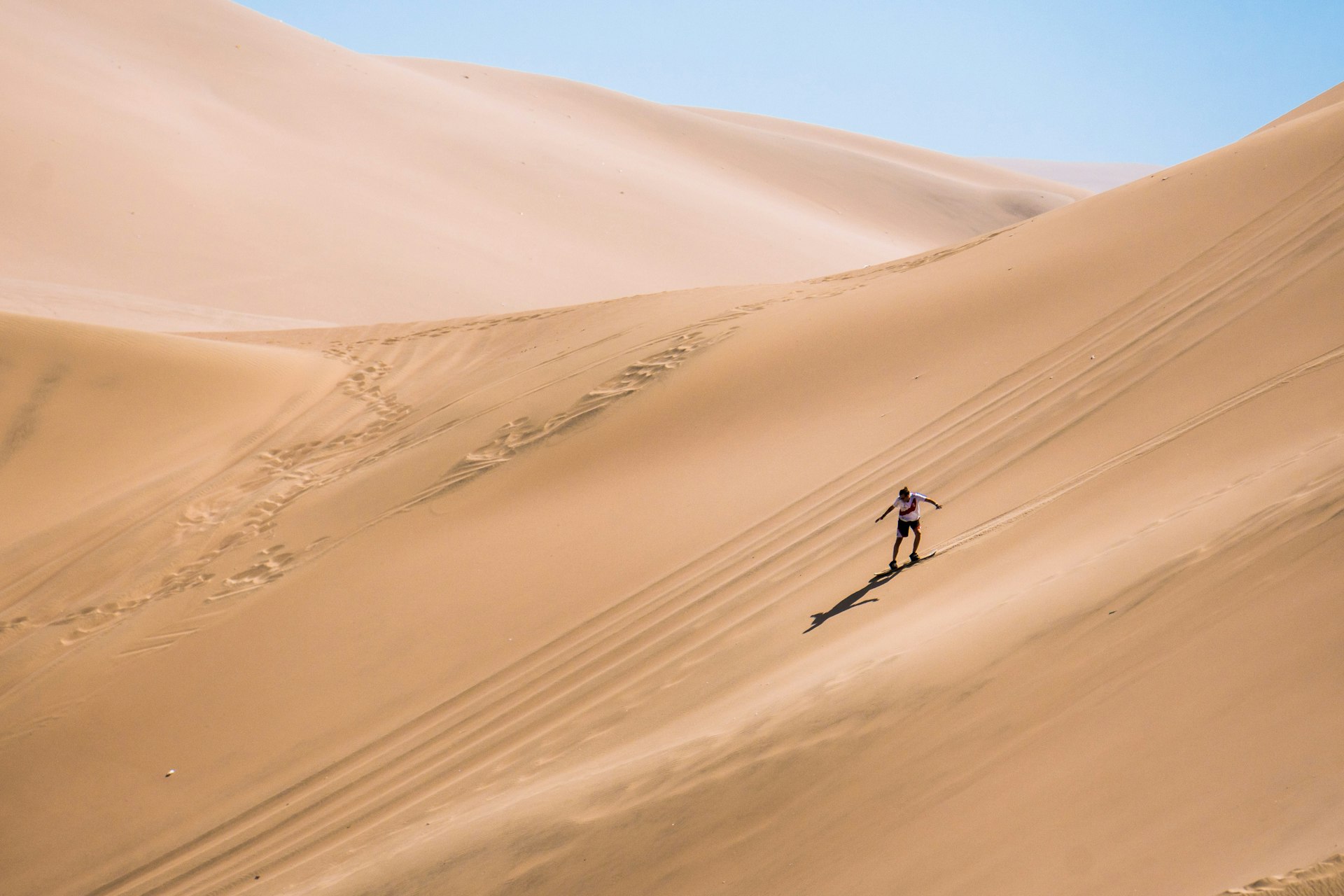
Best for sandboarding adventures
In the vast Ica desert can be found the surreal desert oasis, Huacachina . Rest your eyes upon the sparkling body of water (inhabited by mermaids, according to local legends) before plunging down the dunes upon a sandboard or in a dune buggy for an absolute adrenaline rush. Escape from the harsh desert sun at midday by looking around the impressive Regional Museum of Ica or on a tasting tour of Peru’s national spirit, pisco. With year-round sunshine and just four hours from Lima by car or bus, Ica can provide entertainment for days. If that's not enough, the famed Nazca Lines and Islas Ballestas , the so-called “poor man’s Galapagos,” are just 1½ hours away.
12. Cajamarca
Best for cheese lovers
The northern Andean town of Cajamarca was the fateful capture site of the last Inca, Atahualpa, by the Spanish conquistadors in the 16th century. Remnants of the area’s Inca history abound, including the Cuarto del Rescate (Ransom Room) that Atahualpa had filled with treasures to plead for his liberation as well as his favored thermal baths, now called Los Baños del Inca. Slow down and explore the idyllic countryside nearby: get your hands dirty on an immersive visit to the dairy farm of Granja Porcón , or visit the archaeological complex of Cumbemayo .
Local tip: Cheese is the Cajamarca specialty and is sold in numerous shops in and around the Plaza de Armas.

13. Barranco, Lima
Best for boho vibes
Bohemian, hip and creative Barranco is hands down the coolest district in the capital city of Lima . The coastal neighborhood is walkable and numerous boutique shops, bars and cafes decorate nearly every block. World-renowned restaurants such as Central , Kjolle , Isolina and Merito all call this district home. Many local artists reside in or have studios in Barranco, which means a gallery or exhibit is never far away. Duck into Jade Rivera World for street-art-inspired pieces or the sizable Museo de Arte Contemporaneo , as well as artisan shops such as Puna , Dédalo and Las Pallas .
Local tip: Join the locals sipping potent pisco cocktails at vintage bars, refurbished mansions and chic lounges around Parque Municipal, which throngs with revelers on Friday and Saturday nights.
This article was first published Aug 12, 2021 and updated Nov 10, 2023.
Explore related stories
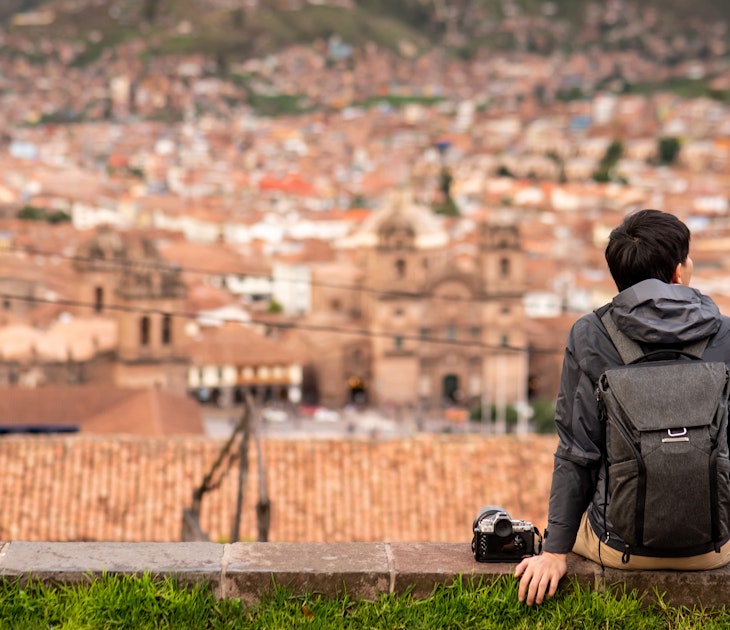
Budget Travel
Jan 10, 2024 • 6 min read
Peru has long been a destination for backpackers on a budget and now other travelers have caught on – here's how to make your money go further on the road.
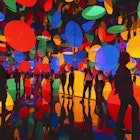
Jan 2, 2024 • 7 min read

Jan 2, 2024 • 11 min read

Dec 27, 2023 • 8 min read

Dec 14, 2023 • 3 min read
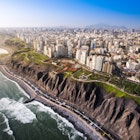
Dec 12, 2023 • 5 min read
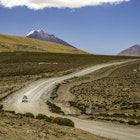
Dec 7, 2023 • 6 min read
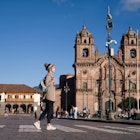
Nov 26, 2023 • 6 min read
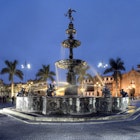
Nov 24, 2023 • 5 min read
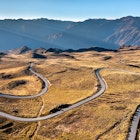
Nov 16, 2023 • 6 min read

Northern Peru Beaches
Peru's best beaches, with guaranteed year-round sunshine , the northern peru beaches offer a relaxing escape any time of the year..
Peru’s best beaches offer a quiet escape, excellent surfing and the opportunity to go whale watching between August and November.
Travelers heading north along the pacific coast from Lima – towards the warmer tropical waters near the Ecuadorian border – are greeted by soft sun-kissed sand and a collection of chic, luxury beach retreats ideal for a family vacation or romantic getaway.
Recommended For
- Luxury Seekers
- Beach Lovers
- Honeymooners
- Wildlife watchers
Things to do
- Whalewatch between August-November
- Catch Peru's impressive waves at Mancora or Chicama Surf Resort
- Soak up year-round sunshine by your luxury hotel pool, cocktail in hand
Sun and Sand on Northern Peru Beaches
Peruvian beaches have an added edge over the many, saturated resorts found in other countries as they are little-known outside of the country. Whilst the waters are not as bright blue as other international beach destinations, the Northern Peru beaches offer a natural ambiance that’s not over-developed, with luxurious, charming properties to relax and unwind after a more active tailormade itinerary in Peru. The best beach hotels are found on soft sandy beaches near relaxed town of Mancora. Asides from soaking up the sunshine, the northern Peru beaches offer opportunity to whale watch, snorkel and enjoy boat rides.
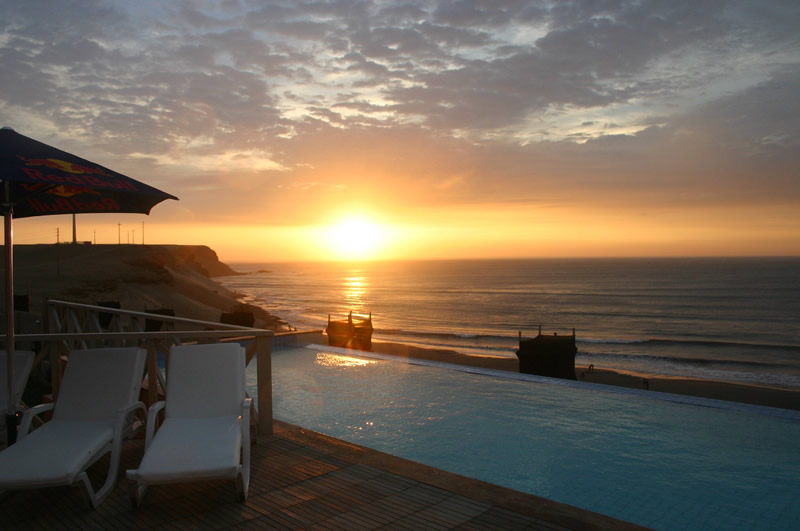
How to Get to the Northern Peru Beaches
T he best luxury beach hotels in Peru are located just outside of the northern seaside town of Mancora , a laid-back fishing town and Peru’s most popular beach retreat around 2 or 3 hours drive from either Piura or Tumbes cities. The beach bolthole is easily reached from Lima via a short flight to the northern airports of Tumbes, Talara or Piura, with an overland road transfer to Mancora.
Thanks to a growing number of plush beach hotels, Mancora increasingly attracts sun-seeking jetsetters looking to bask in year-round rays and bathe in its warm waters . Mancora town itself is a popular pit-stop on the backpacker trail. Thankfully, the best hotels in Mancora – Arennas and KiChic – and the best private villas, have sensibly set up shop outside the town on a quiet, sandy stretch of sand. There’s simply no need to leave this patch, so you can save those minutes walking between your accommodation and the perfect sandy spot, spending them instead relaxing with a cocktail in hand. Peru’s luxury beach hotels and private villas are designed for kicking back.
Where to Stay: Hand-picked Recommendations
A chic, luxury, boutique retreat that places emphasis on health and wellness. It boasts its own large yoga studio with daily classes, which are also open to outside guests. Room sizes and layouts all differ – some sea-facing and with pools – but throughout the stylish decoration focuses on neutral shades and natural materials. Showers are outdoor, stone affairs. One of KiChic’s draws is its restaurant, with a vegetarian and fish menu (no meat) which includes pizzas, pastas and plenty of superfoods. It’s really worth popping over here for a meal if staying at next door Arennas.
Next door, Arennas delivers five-star comfort with more of a ‘resort’ design and feel. It will similarly appeal to couples, who can curl up on the deckchairs they place on the beach, but it is also the best luxury option for globetrotting families. The pool is larger compared to KiChic’s. Those wishing to avoid kids, however, can always rent one of the sumptuous private villas, which have their own pool and are perfectly positioned for watching the sun set over the sea.
Private Villas
For a more private experience, we offer a collection of luxurious and well appointed villas, perfect for your relaxing beach escape. Our favorites are Casa Adobe , Casa Noa Noa , Casa Blanca , Casa Velamar, Casa Tierra and Casa Lino . All offer exquisite accommodations, private pools, a on-site staff, and wonderful amenities.
Activities on the Northern Peru Beaches
As with any beach resort, the usual array of outdoor activities can be found: boat excursions, nature trips, horseback riding , kite surfing and all manner of other water sports are all possible on Peru’s northern beaches.
Surfing in particular has become extremely popular in Peru with more and more surfers attracted to the untapped potential of the country’s waves. For this reason, we recommend Chicama Surf Resort , an ideal choice for families as it offers a wide range of activities for all age groups. Chicama is becoming well known in the international surfing community for its mile-long, left tubular wave that surfers can ride straight or break up into shorter runs. Read our blog to find out more about the growing popularity of Chicama and surfing in Peru.
Whale Watching
Another favorite adventure activity of ours is whale watching ; it is possible to take a boat out on to the open ocean to spot humpback whales migrating north from late July through to October. Aracari’s excursion is on a very comfortable boat called the Yate, which is complete with bathroom. There is an 80% chance of seeing the whales, who at times can produce amazing leaps from the water.
The Moche Route
Perhaps the rustic, natural appeal of this part of Peru is a result of the crashing swells of the Pacific that draws surfers, or it could be the long history that the area has seen–thousands of years back–before the Europeans arrived. Indeed, the North is an area of rich cultural heritage as much as paradisaical landscapes. The Moche Route is dotted with important ruins, and tours to see that can be incorporated into a beach trip north.
These properties can also be reached as an extension to the highlights of the northern cities as part of any luxury travel Peru itinerary; for those exploring the outstanding archaeology in the Trujillo and Chiclayo area in northern Peru — known as The Moche Route — Piura and Chiclayo are linked by a 5-hour journey along a paved highway, meaning that you can comfortably transfer between the two areas. A stop at the picturesque town of Catacaos, a centre for arts and crafts near Piura, is highly recommended on this journey, before unwinding at the beach.
When to Travel
One of the highlights of Mancora is its year round sunshine and warm temperatures. Below you can check out the average weather in Mancora by month. Whale watching is possible from August to November.
Please note that during Peruvian national holidays, specifically around Christmas, the Mancora beaches are more crowded. The private villas and hotels should be booked in advance if you are interested in traveling around the holidays.
Contact us or email [email protected] if you are interested in a luxury, tailormade trip to Peru including a visit to the northern Peru beaches.
Highly recommended accommodations in Northern Peru Beaches
Kick back and relax by the soft sandy shores of Mancora at the best luxury beach hotels in Peru: KiChic or Arennas. Alternatively Aracari offers a handpicked portfolio of luxurious private villas. Avid surfers visitng Peru principally for its waves will want to check out Chicama Surf resort.
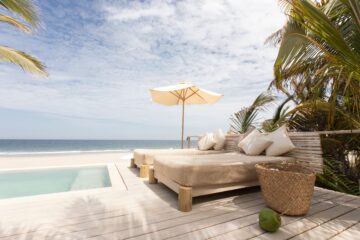
Private Villa in Mancora: Casa Tierra
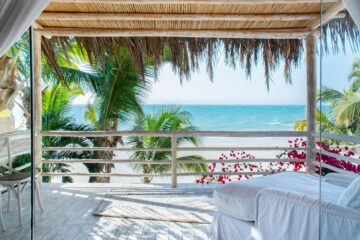
Private Villa in Mancora: Casalino
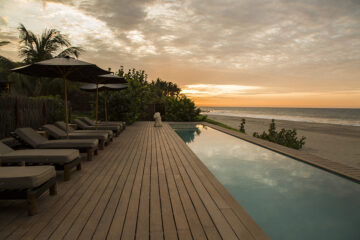
Arennas Mancora
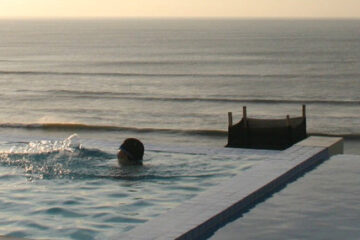
Chicama Surf Resort
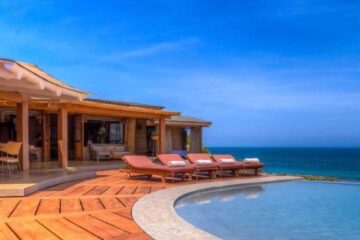
Casa Noa Noa
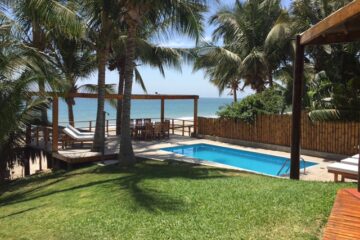
Casa Velamar
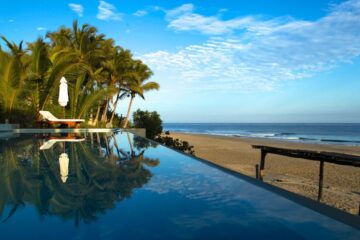
Casa Blanca Beach Front
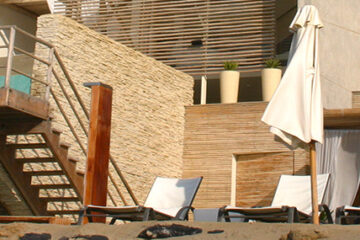
DCO Suites Lounge & Spa
Other destinations in peru.

Machu Picchu
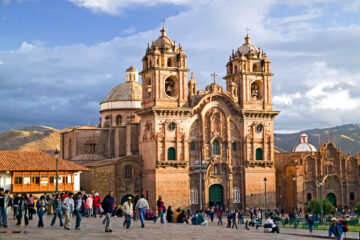
Sacred Valley
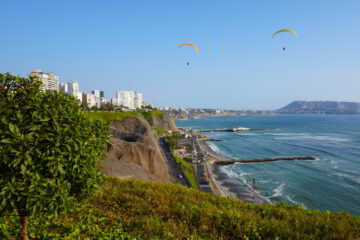
Lake Titicaca – Peru
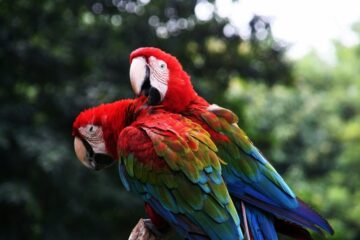
The Amazon Rainforest
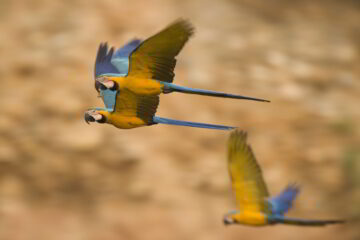
Tambopata National Reserve
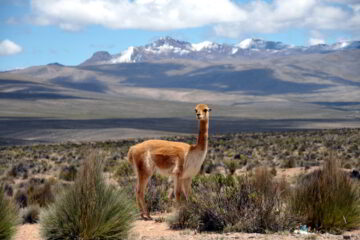
Colca Canyon
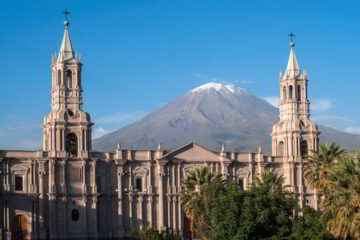
Chachapoyas
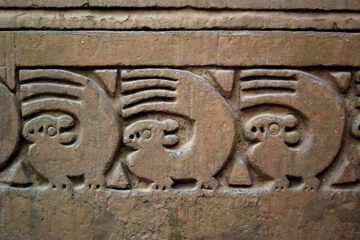
Manu National Park
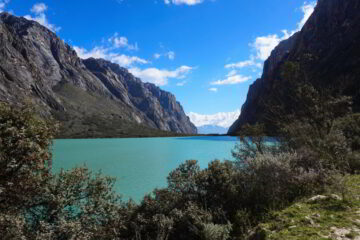
Cordillera Blanca
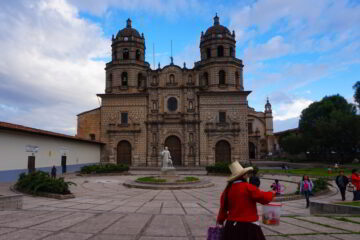
Andean Luxury Handpicked by Aracari Aracari Shop offers handmade Andean luxury, delivered direct from our region, all the way to you – wherever you are in the world. Curated by experts, Aracari Shop presents distilled collections of art, fashion, home and gifts selected from respected artists and master artisans featuring limited editions and collaborations.

Qué hacer en el norte de Perú: 5 destinos imprescindibles
- Cómo visitar el Norte de Perú + Consejos
Rico en yacimientos arqueológicos y magníficos paisajes, el norte de Perú sigue siendo en gran medida virgen para el turismo internacional.
Pero, ¿por qué oímos hablar tan poco de esta región en comparación con Cuzco , el Valle Sagrado , Machu Picchu o el Lago Titicaca ?
¿Merece realmente la pena visitarla? ¡Por supuesto que sí!
El problema de Perú es que el turismo se concentra en el sur del país. La ventaja para los viajeros es que quienes decidan explorar el norte de Perú descubrirán una región más auténtica y mucho menos frecuentada por los turistas .
Para ayudarte a planificar tu itinerario, aquí tienes mi top 5 de los mejores destinos del norte de Perú con las actividades que hacer, lugares que visitar y mejores alojamientos para todos los presupuestos.
Entonces, ¿qué ver en el Norte del Perú?
Alojamiento en Chiclayo
Alojamiento en chachapoyas, alojamiento en leymebamba, alojamiento en cajamarca, alojamiento en trujillo, alojamiento en huanchaco, otros destinos en el norte de perú, mapa del norte de perú, ¿es posible visitar el norte del perú por cuenta propia, cómo llegar al norte de perú, reserva tu boleto de avión al mejor precio, ¿quieres alquilar un coche en el norte de perú, ¿cuánto tiempo se tarda en visitar el norte de perú.
- ¿Te vas de viaje a Perú? ¡Esto te puede interesar!
1. Chiclayo
Después de Cusco , Chiclayo es el destino turístico arqueológico más importante de Perú .
Pero, tranquilo, aunque la región es increíblemente rica en yacimientos arqueológicos Mochica, Chimú y Lambayeque, ¡su afluencia de viajeros no se acerca ni de lejos a la de los yacimientos turísticos del sur de Perú!
He aquí los mejores lugares que ver en Chiclayo:
- La H uaca Rajada donde se descubrió la tumba del Señor de Sipán un importante gobernador mochica (siglo III) acompañado de un guerrero, un sacerdote, dos mujeres, un niño, un perro, una llama, un guardia con los pies amputados, así como numerosas joyas de oro y plata con incrustaciones de turquesa. También se encontraron otras dos tumbas: la de un chamán con varios símbolos religiosos y objetos de culto, y otra de un alto jefe militar mochica cubierto de estandartes y medallas, rodeado de 90 vasijas que contenían comida y bebida, así como de varios sirvientes y escuincles de llama.
- El museo de Tumbas Reales de Sipán presenta una reconstrucción de las tumbas mochicas de la Huaca Rajada con una gran colección de objetos mochicas, entre ellos magníficas joyas encontradas en la famosa tumba del Señor de Sipán.
- Túcume es un enorme complejo arqueológico que data del año 700 y ocupa 220 hectáreas. Contiene 26 edificios de adobe, el mayor de los cuales es la Huaca Larga, ¡construida con 130 millones de ladrillos de adobe! En el centro se encuentra el Cerro La Raya, una montaña sagrada que ofrece una magnífica vista del verde valle circundante.
- Santuario Histórico Bosque de Pomác es un área natural protegida que, además de ser una meca para los observadores de aves con 90 especies de aves, alberga 36 pirámides de la cultura Sicán, entre ellas la Huaca Las Ventanas, donde se encuentran las tumbas de los Señores de Sicán -que no deben confundirse con Sipán- y sus objetos hechos totalmente de oro.
- La Reserva Ecológica de Chaparrí es un área de conservación privada de 34.412 hectáreas que alberga varias especies endémicas y en peligro de extinción, así como el oso de anteojos, ¡el único oso de Sudamérica! Es una gran escapada para los amantes de la naturaleza, pero atención, es obligatorio visitarla con un guía.
Mis consejos Para saber más sobre Chiclayo y sus atractivos, consulta mi artículo: ¿Qué hacer y ver en Chiclayo?
- Santa Victoria House: muy bien situado, cerca del estadio Elías Torres y del Aeropuerto, con un buen wifi, TV, un lugar ideal para un pequeño presupuesto en Chiclayo . A partir de solamente 21 euros la habitación con baño privado .
- Costa del Sol: Whyndham Chiclayo: Una de las mejores opciones en Chiclayo, cuenta con piscina techada, gimnasio con sauna, terraza y restaurante. Está a 5 minutos del Parque Provincial y del Aeropuerto. A partir de solamente 50 euros la noche.
- Casa Andina Select : he aquí una buena opción para más confort. Es un hotel de la famosa cadena hotelera de alta gama » Casa Andina». Algo alejado del centro, tranquilo, con wifi gratuito en las zonas comunes, piscina exterior y spa Habitación climatizada, con baño privado con bañera, minibar. A partir de 74 euros la noche con desayuno.
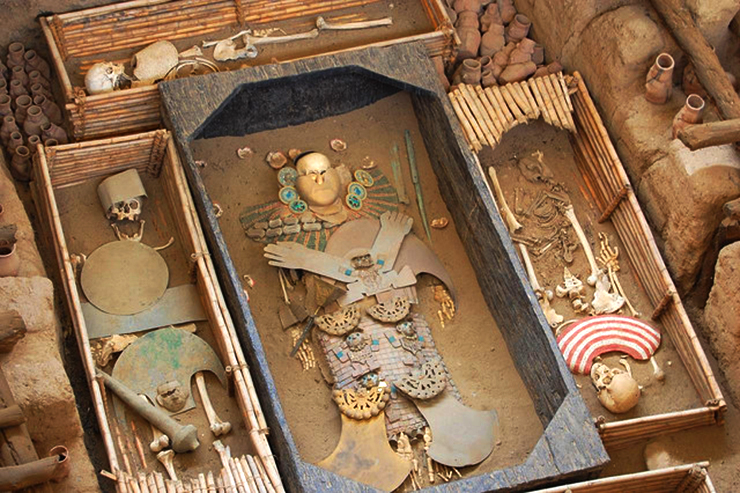
2. Chachapoyas
Parte esencial de una estancia en el norte de Perú, C hachapoyas se llama acertadamente: «montaña de niebla» en dialecto sachapuyo.
Ofrece un entorno de ensueño con su húmedo bosque de montaña salpicado de cascadas y cuevas.
Aquí tienes un resumen rápido de qué hacer en Chachapoyas :
- F ortaleza de Kuélap . Es u n gran complejo erigido a 3000 m de altitud por los Chachapoyas hace 700 años, ofrece una magnífica vista del valle circundante. Esta vista es una verdadera recompensa para el viajero, ya que la caminata hasta la fortaleza puede durar de 3 a 6 horas, dependiendo del nivel de experiencia en senderismo.
- Cataratas de Gocta . Esta cascada, la más alta de Perú y una de las más altas del mundo , sólo fue revelada al público en 2006 gracias a una expedición germano-peruana. Toma alrededor de unas 2,5 horas en caminar desde el pueblo de Cocachimba por un sendero verde a través de un paisaje prístino donde se pueden ver muchas especies de plantas y animales, como tucanes y monos. Aquí el camino es tan hermoso como el destino.
- A una altura de 2750 m, en un acantilado, se encuentran los sarcófagos de Karajia . Estos sarcófagos Chachapoya, llamados Purunmachos -viejos padres- por los lugareños, se construyeron con una mezcla de piedra, barro y paja, y podían alcanzar hasta 2,5 m de altura. Sólo es posible acercarse a los seis sarcófagos desde unos 50 metros de distancia, pero lo impresionante es imaginar el esfuerzo que debió de suponer colocarlos allí.
Mi consejo Lee también: mi guía completa de Chachapoyas ¡con los 12 lugares imprescindibles para no perderse nada de la región!
Hay varias opciones de alojamiento para todos los presupuestos, desde mochileros hasta hoteles de lujo y eco-lodges. Aquí te comparto mis tres recomendaciones de alojamiento en Chachapoyas :
Chachapoyas Backpackers Hostal Boutique: Agradables habitaciones en excelente ubicación. Ofrecen servicio de renta de bicicletas para los amantes de la naturaleza y enlace al aeropuerto. Recepción 24 horas. Desde 28 Euros con desayuno incluido.
- Hotel Fundo Achamaqui: Hermoso edificio estilo colonial con vistas hacia las montañas. Diariamente se sirve desayuno buffet con repostería. Cuenta con bar para que disfrutes de un delicioso Pisco Sour. Desde solo 55 Euros la noche.
- La Xalca Hôtel : un hotel muy bonito en Chachapoyas, a dos cuadras de la Plaza de Armas. Un patio magnífico, habitaciones amplias, jardín y vista a la montaña. Wifi gratis y muy buen desayuno. ¡Una excelente relación calidad-precio para un confort superior! Desde sólo 75 euros por noche, con desayuno.
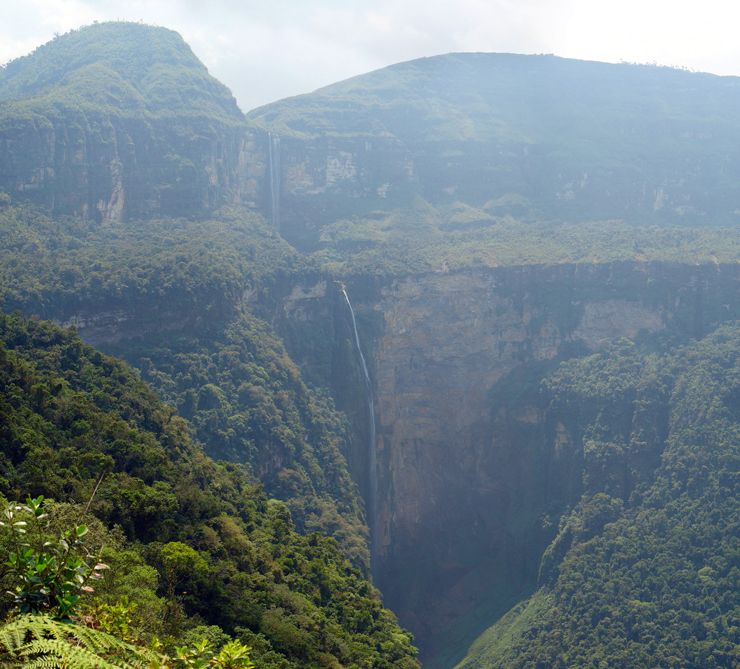
3. Leymebamba
En la carretera entre Chachapoyas y Cajarmarca se encuentra el pueblo de Leymebamba , cuyo principal atractivo es su museo.
En contiene más de 200 momias perfectamente conservadas , casi todas envueltas en finas telas de algodón, ¡así como más de 2000 objetos funerarios encontrados en la Laguna de los Cóndores en 1997! El museo se construyó utilizando técnicas arquitectónicas locales, como puede verse en el edificio circular de piedra, y en su tejado de madera y tejas.
Mi consejo Te invito a leer el artículo sobre Leymebamba para saber más sobre su fascinante museo y su tejido tradicional.
Dependiendo de tu itinerario, podrías dormir en Chachapoyas (a 2h45), si no ¡ La Casona de Leymebamba es la mejor opción!
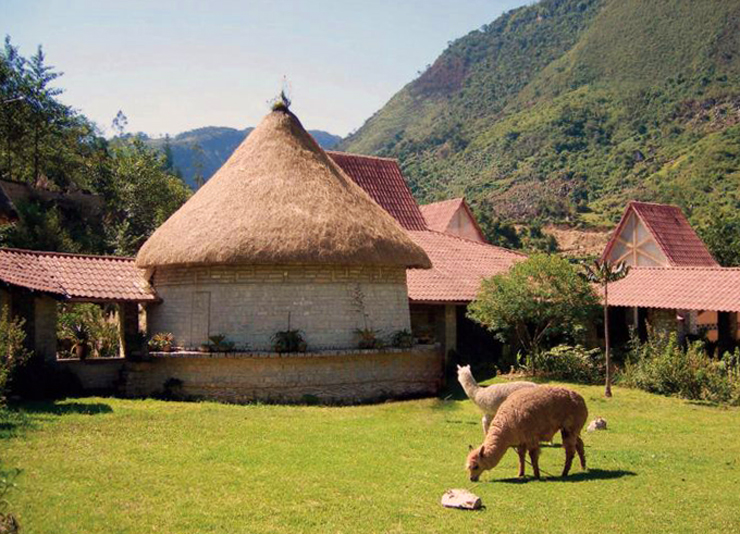
4. Cajamarca
Cajamarca es conocida por los peruanos por sus productos lácteos y por su importante y colorido carnaval, que se celebra a principios de marzo y le ha valido el título de « Capital del Carnaval Peruano «. Pero también hay algunas atracciones interesantes.
He aquí qué ver en Cajamarca:
- El « Cuarto del Rescate» es una habitación de 11 m x 7 m donde el Sapa Inca Atahualpa fue hecho prisionero por Pizarro a pocos metros de la Plaza Mayor. Ofreció esta habitación llena de oro y plata a cambio de su libertad, pero nunca la encontró.
- Cumbe Mayo es un «bosque de piedra» formado por rocas de origen volcánico cuya erosión les ha dado la silueta de sacerdotes en procesión. Hay un acueducto de 8 km construido por la cultura Cajamarca 1500 años a.C. en la roca. Recogía el agua de las lluvias y la llevaba hasta el Pacífico. Podría pensarse que se trataba de un sistema de riego, pero como la región está suficientemente abastecida de agua, el canal habría tenido más bien una función ceremonial, un culto al agua (como Quenko en Cusco).
- Ventanillas de Otuzco es un lugar de enterramiento de la cultura Cajamarca donde hay 300 nichos de 50 cm de altura y unos 8 m de profundidad, que contenían tumbas excavadas en la roca del acantilado. Algunos de ellos conducen a un corredor interior que contiene otros nichos. Los incas los habrían utilizado para almacenar grano y redirigieron las entradas para mantenerlas frescas.
- Shinawasim: El mejor hotel barato de Cajamarca. Cerca del centro de Cajamarca , aalojamiento agradable, buen ambiente y acceso a una cocina totalmente equipada. ¡Desde sólo 7 euros en dormitorio y 24 euros por habitación!
- El Portal del Marqués : un hotel en un bonito edificio colonial en el centro de Cajamarca, a una manzana de la plaza principal, que ofrece una excelente relación calidad-precio . Con servicio gratuito de enlace con el aeropuerto, bar y habitaciones confortables. Buen desayuno incluido, ¡desde sólo 48 euros por noche!
- Costa del Sol Wyndham Cajamarca :Es la dirección ideal si buscas aún más comodidad : piscina cubierta, sauna seca, gimnasio, desayuno buffet en el restaurante del hotel , que también abre para comer y cenar, con una hermosa vista de la Plaza de Armas . La ubicación es ideal para estar en el corazón de la ciudad, y para estar en el punto de partida de excursiones. Buen desayuno incluido, a partir de 71 euros por noche .
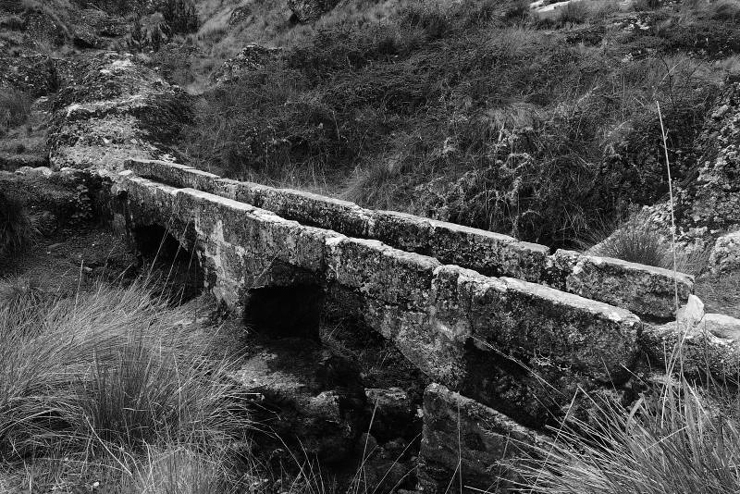
5. Trujillo
Trujillo es a la vez la cuna de las civilizaciones precolombinas Chimú y Mochica y un importante centro de difusión de la marinera , una de las danzas peruanas más bellas.
Por eso se la considera la capital cultural de Perú.
La región es rica en yacimientos arqueológicos, restos de grandes culturas peruanas, menos conocidas internacionalmente que los incas, pero igual de importantes para el país.
Esto es lo que hay que ver en Trujillo :
- La Huaca del Sol y la Huaca de la Luna , construidas hace 1500 años, fueron respectivamente un centro político y un templo religioso. Con sus frescos, pinturas en relieve, grandes plazas y terrazas, el complejo aún no ha revelado todos sus secretos, pero ofrece una buena presentación de una cultura que merece mucha más visibilidad. ¡Estos lugares fueron la capital de la cultura mochica !
- Chan Chan , declarada Patrimonio de la Unesco, es otra visita obligada en el norte de Perú . Fue la ciudad de adobe más grande de América y la segunda del mundo. Creada por el pueblo Chimú con alamedas, jardines, acueductos, palacios y más de 10.000 casas. Hoy puedes admirar sus característicos muros con relieves en forma de aves, peces y elementos geométricos.
- La Huaca Arco Iris, también conocida como Huaca del Dragón es un antiguo centro religioso y administrativo del siglo XIII, con motivos de dragones, danzantes, lagartos, animales y arco iris. También puedes visitar la Huaca Esmeralda , que es un templo piramidal con antiguos almacenes de alimentos y formas de pájaros y peces.
- El centro histórico de Trujillo, con sus edificios coloniales de fachadas coloridas, su Plaza de Armas y su catedral de color amarillo brillante . Además, el Museo de Arqueología (Jirón Junín 682, Trujillo, entrada 5 soles, niños 1 sol), presenta la evolución cultural de la costa norte de Perú desde 10.000 a.C. hasta la llegada de los españoles en el siglo XVI .
- Huanchacho : un pequeño pueblo de pescadores que se ha convertido en destino turístico, ahora es un lugar popular para los surfistas. El ambiente es más relajado que en Trujillo y es una buena opción para pasar la noche.
Mi consejo Para saber más sobre los atractivos de la región de Trujillo: ¿Qué hacer y ver en Trujillo?
- Hostal Don Alberto: la mejor opción si buscas un hotel que no sea caro en Trujillo . Ambiente familiar, se encuentra ubicado en el centro de la Ciudad, las camas son confortables y hay estacionamiento sin costo. ¡ A partir de 19 euros solamente la noche en habitación!
- Costa del Sol Trujillo centro: Con una ubicación privilegiada al lado de la Plaza de Armas , este alojamiento ofrece confort e intimidad en un edificio de tintes históricos. Disfruta de su piscina al aire libre, centro fitness y restaurante. A 10 minutos de ruinas preincáicas. Es una muy buena opción calidad precio. Habitaciones desde 65 euros.
- Doubletree by Hilton: Este es el mejor hotel de Trujillo con cómodas habitaciones, piscina exterior, buen restaurante, bar y sauna. Desayuno incluido desde 100 euros por noche.
También puedes pasar la noche en Huanchaco , donde los precios suelen ser más bajos.
- Totora Surf School: esta escuela de surf y albergue, situado frente al mar, es la mejor opción de alojamiento barato en Huanchaco. Gran terraza en la azotea, ambiente muy relajado y buen wifi. ¡Desde sólo 14 euros por noche!
- Hotel Bracamonte: es una casa con piscina y jardín, habitaciones luminosas con balcón, a menos de 5 min andando de la playa. Desayuno incluido, desde 70 euros por noche.
- Hotel Montemar: Cómodas habitaciones Pet-Friendly en primera línea de Playa. Cuenta con piscina y vistas a la ciudad. Desde 26 Euros.
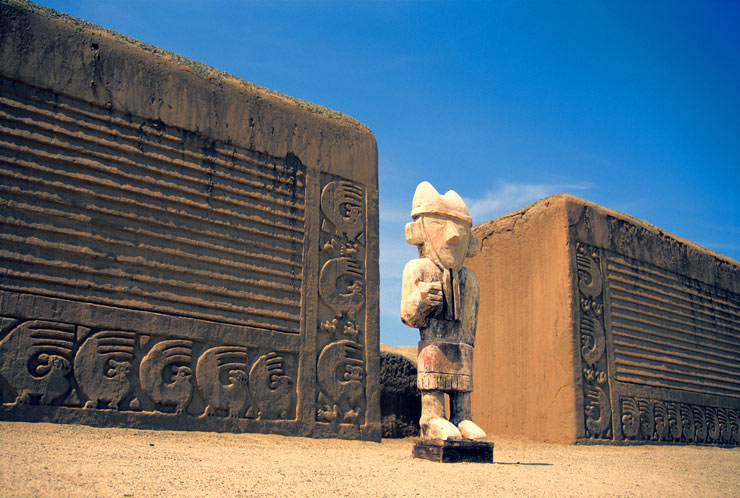
Por supuesto, ¡el norte es inmenso! También podemos mencionar Huaraz , Piura , Máncora , Casma , etc.
Sí, puedes ir por tu cuenta, sin tour.
Sin embargo, hay dos puntos muy importantes que debes tener en cuenta al organizar tu viaje al norte de Perú : la falta de información sobre el terreno y el acceso a los sitios.
Como el norte de Perú está mucho menos desarrollado turísticamente que el sur, hay menos herramientas a disposición del viajero solitario: pocos carteles explicativos y, por tanto, a veces poca información disponible sobre los sitios arqueológicos.
Te aconsejo encarecidamente que contrates los servicios de un guía en el lugar , o al menos que llegues con información a la mano para apoyar tu visita.
Además, muchos de los yacimientos están bastante aislados en su entorno natural, que es lo que los hace fantásticos, pero su acceso no ha sido tan fácil como en otros lugares con buenas carreteras y autopistas despejadas, ya que el flujo de turistas no es tan grande.
Puedes elegir hacerlo todo en autobús, o empezar con un vuelo de Lima a Chiclayo (1,5 horas) o Trujillo (1,10 horas) y luego viajar en autobús entre las ciudades.
Para construir correctamente el itinerario, debes tener en cuenta que los trayectos en autobús son bastante largos , por lo que no dispondrás de tiempo suficiente para visitarlas: Lima-Chiclayo 12h, Lima-Trujillo 9h, Chiclayo-Chachapoyas 9h-10h, Chachapoyas-Leymebamba 3h, Leymebamba-Cajamarca 7h, Cajamarca-Trujillo 6h.
Existen varias compañías de autobuses (y muy cómodas): GHbus, Civa, Movil Tours, Cruz del Sur…
Si quieres encontrar un boleto de avión barato a Perú , te recomiendo que utilices nuestro comparador, en colaboración con Skyscanner: ¡es la garantía de obtener el mejor precio para tu vuelo internacional y los vuelos nacionales !
¡Es cierto que es la mejor manera de hacer una ruta por Perú con total libertad!
Sin embargo, es primordial comparar detenidamente las diferentes opciones para encontrar el mejor coche al mejor precio de acuerdo a tu presupuesto.
El mejor consejo que te puedo dar es pasar por Booking.com Cars por tres excelentes razones:
- Te va a permitir de comparar fácilmente los precios de las diferentes agencias: ¡un medio rápido y sencillo para encontrar el mejor precio!
- La anulación a menudo es gratuita : de esa manera tienes derecho a cambiar de idea al último minuto
- Ofrece un seguro completo que es menos caro que en las otras compañías: es entonces una economía instantánea.
Haz clic en el botón verde para encontrar tu coche en Perú :
Para ahorrar algo de tiempo, puedes hacer varios viajes nocturnos en autobús.
Se tarda una media de 2-3 días en cada destino , excepto en Leymebamba , que se tarda 1 día.
¿Te vas de viaje a Pe rú? ¡ Esto te puede interesar!
Descubre mis artículos sobre Perú: Todos mis artículos para ayudarte a planificar tu viaje a Perú
Qué Ver y Hacer en Perú? Los 30 mejores atractivos turísticos
- Itinerario : Perú en 15 días + mis consejos
- Itinerario : 2 semanas en Perú + Dónde alojarse + Mis Consejos
- Itinerario : Perú en 10 dí as – cómo ver lo máximo en poco tiempo
- Itinerario : 3 semanas en Perú
- Itinerario : 3 semanas en Perú y Bolivia
- Road Trip en Perú : los mejores itinerarios para 10, 15, 21 días y 3 semanas Perú-Bolivia
- Chiclayo : Qué ver y hacer + Dónde Alojarse
- Huanchaco : qué ver y visitar + consejos
- Huaraz : los 17 mejores atractivos turísticos
- Trujillo : las 9 mejores cosas que hacer
- Chachapoyas : los 12 mejores lugares que conocer
- Catarata de Gocta : Cómo llegar + Mis consejos
- Kuélap : cómo llegar por tu cuenta o con un tour
- Cómo visitar los Sarcófagos de Karajía y la Cueva de Quiocta
¿Usas Pinterest? ¡Pinea esta imagen!
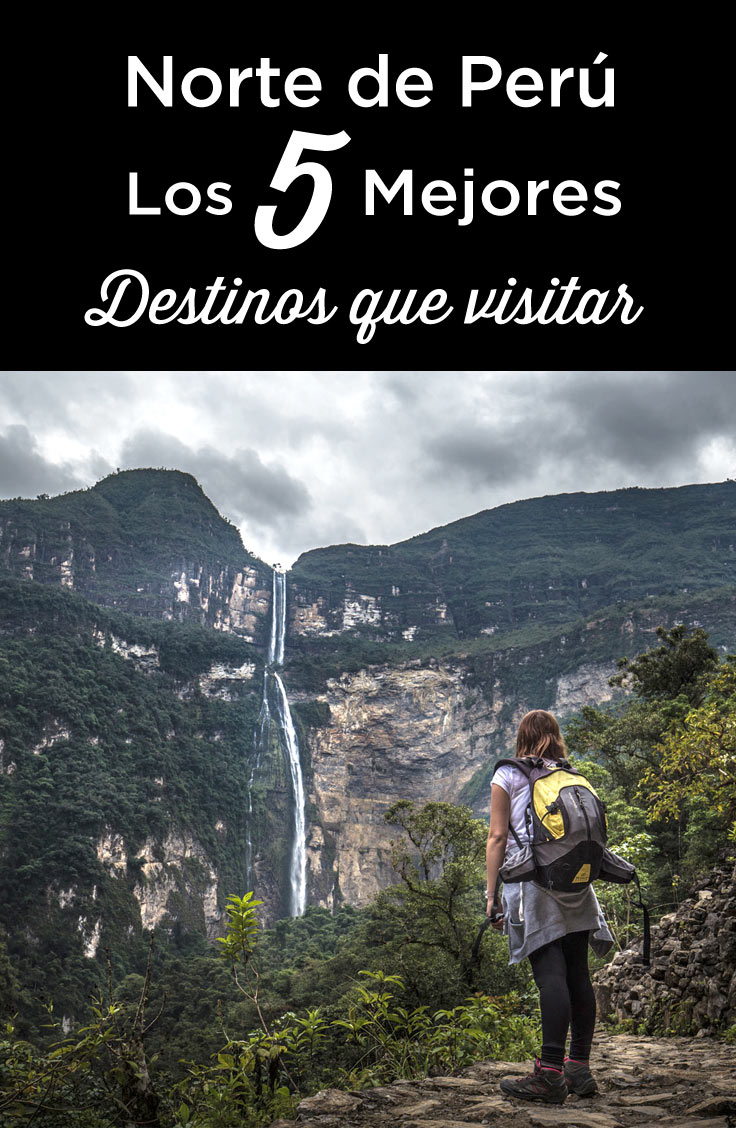
Fundadora y editora de Voyage Perou, soy una gran amante de Latinoamérica. Esa Latinoamérica que exploro con gran fascinación, una pluma y una cámara en mano. ¿Mi motivación? ¡Reunir en mis guías toda la información y consejos prácticos para que tu también te enamores y te animes a la aventura!
Related Stories
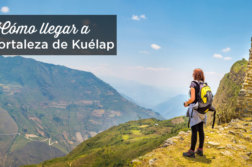
Cómo llegar a la Fortaleza de Kuélap (Chachapoyas) + mis consejos
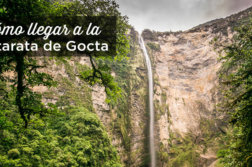
Cómo llegar a la catarata de Gocta + Dormir en Gocta Lodge
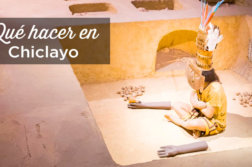
Visitar Chiclayo: las 8 mejores cosas que ver y hacer
Leave a reply cancel reply.
Your Name (required)
Your Email (required)
Your Website (optional)
Guarda mi nombre, correo electrónico y web en este navegador para la próxima vez que comente.
- Últimos Artículos
- Guías de viaje de Perú
- Machu Picchu
- Pacaya-Samiria
- Tours Diarios Chachapoyas
- Paquetes Turísticos Chachapoyas
- Norte de Perú
Dejános tu consulta sobre el Tour y te respondemos lo antes posible
Completa todo los campos
11D/10N Tours En El Norte De Peru
Expedición en la costa norte de perú.
Le presentamos nuestra mejor oferta para conocer de verdad la costa norte del Perú , para este itinerario pensamos en los viajeros que buscan aprender de nuestra historia, recorrer nuestros bosques secos, desiertos, valles, antiguas pirámides y también tener un tiempo de relax a las orillas del Pacífico. Este es el programa más completo que ofrecemos para que usted vea otro lado del Perú, uno poco conocido pero no menos interesante… ¡Anímese, haga el viaje más memorable de nuestra costa!
Día 1: Lima – Caral – Casma
Nuestro guía de turismo le recogerá en Lima (opcional aeropuerto u hotel) y conducirá en movilidad privada, durante unas tres horas, a Caral , la ciudad más antigua de América, excavada desde 1996 y ya declarada patrimonio de la humanidad por la UNESCO , por lo diverso y extenso de sus edificaciones pétreas y por haberse confirmado con cerca de ciento cincuenta fechados radio carbónicos que fue construido hace cinco mil años, es considerada por los especialistas como la urbe sagrada más antigua del continente, después de esta visita seguiremos rumbo norte hacia Casma por unas tres horas, donde nos alojaremos en el hotel seleccionado (aprox. 6:00 pm). Incluye Desayuno.
Día 2: Cerro Sechín – Chanquillo
Iniciamos en la mañana con una excursión a cerro Sechín , sitio arqueológico ubicado cerca de Casma construido hace unos cuatro mil trescientos años, el extenso templo principal conserva su simbología, relacionada a guerreros legendarios y sacrificios humanos, está representada en bloques y pilares de piedra, aquí visitamos también el museo de sitio Max Uhle, que tiene una colección de cerámica, textiles, artefactos líticos y momias encontradas en esta área, este pequeño museo también nos hace conocer de otros sitios de interés, uno de ellos será nuestro próximo destino. Después de almuerzo, en la tarde, nos dirigimos a Chanquillo , el calendario más antiguo de las Américas; aquí, en medio del desierto, “los pilares del Sol” siguen marcando solsticios, equinoccios y estaciones del año, como guardianes del tiempo que cumplen su tarea de dos mil seiscientos años, también veremos el templo principal, que fue pensado como fortaleza durante mucho tiempo, ahora se entiende como un recinto ceremonial donde los peregrinos veían el camino del dios Sol iluminando las trece torres. Esta es una visita para amantes de la arqueología que disfrutará de inicio a fin. Después de Chanquillo (aprox. 4:30 pm) regresamos a Casma para pasar la noche en el hotel. Incluye desayuno y almuerzo.
Día 3: Casma – Trujillo centro histórico
Por la mañana iniciamos el viaje dirección norte para ir hacia la tercera ciudad más grande del Perú, Trujillo . En el camino, que dura unas cuatro horas y media, veremos valles fértiles que forman oasis en medio del árido desierto de la costa norte de nuestro país, también veremos la ciudad industrial de Chimbote , símbolo de la producción siderúrgica y pesquera del país, llegaremos a Trujillo para almorzar y conocer el centro histórico de la ciudad de Trujillo , allí recorreremos sus principales casonas, iglesias, parques y calles, en este tour haremos también una parada en el museo de juguete y en la colección de José Casinelli, donde usted podrá ver miles de piezas arqueológicas de magnífica calidad. Este servicio se realiza normalmente a pie, aunque para la visita de la colección Casinelli tendremos servicio de movilidad. Después de concluido este día de visita (aprox. 4:30 pm) le conduciremos al hotel en Trujillo para pernocte. Incluye desayuno y almuerzo.
Día 4: Huacas de Moche y Chan Chan
Iniciamos nuestro cuarto día de tour con la visita a uno de los más grandes atractivos del norte de nuestro país, las Huacas de la Luna y del Sol, yacimiento arqueológico de la cultura Moche construido hacia el 100 d.C. Este sitio excavado por arqueólogos peruanos desde 1992, ha mostrado el mundo la sofisticación de esta civilización precolombina extinta hace unos mil trescientos años, el museo de sitio muestra piezas de exquisita calidad (cerámica, textiles, esculturas de madera y joyas) y la Huaca de la Luna fascina por sus murales polícromos en alto relieve increíblemente bien conservados, su portentosa arquitectura es algo de lo más especial de la costa norte de Perú. En la tarde, después de un almuerzo marino frente al litoral en Huanchaco (balneario más popular en la provincia) nos dirigimos a Chan Chan, complejo arqueológico declarado patrimonio de la humanidad por la UNESCO en 1986, es considerada la ciudadela de barro más extensa del mundo, visitamos uno de los nueve ‘palacios’ que componen el inmenso yacimiento, recorriendo espacios ceremoniales decorados con motivos de muy buena calidad artística, sorprende siempre a los visitantes la distribución armónica de áreas gigantescas y los símbolos que han representado en murales de alto relieve en casi todos los recintos más importantes. Después de este recorrido regresamos a Trujillo (aprox. a las 5:00 pm) para pernoctar en el hotel. Incluye desayuno y almuerzo.
Día 5: Huaca el Brujo – Traslado a Chiclayo
Para esta jornada comenzamos conduciendo hacia el norte, con dirección a la ciudad de Chiclayo , en el camino hacemos una parada en la Huaca El Brujo, ubicada a unos treinta minutos de la carretera Panamericana norte, esta huaca es quizá la que goza de las vistas más impresionantes de la costa norte de Perú , un yacimiento desde el cual se puede observar el desierto, los vastos campos agrícolas y el océano Pacífico, realizamos la visita a la Huaca Blanca, cuyos murales son de suma belleza, sobresale el recinto donde en 2005 fue hallada por arqueólogos peruanos ‘La Señora de Cao’, los recintos polícromos que han sido descubiertos en varios de los niveles de construcción de la pirámide principal, luego conocemos el museo de sitio que, en seis salas, nos da a conocer los cinco mil años de historia continua de este interesantísimo yacimiento. En horas de la tarde continuamos el trayecto hacia Chiclayo , ciudad a la que llegaremos después de unas tres horas y media de terminada la visita al complejo El Brujo. Siempre tenemos flexibilidad para detenernos en ruta por fotos o baños. Al arribar a Chiclayo, traslado al hotel seleccionado para descanso (aprox. 5:00 pm). Incluye desayuno y almuerzo.
Día 6: Ruta Sicán
Una de las sociedades precolombinas más desarrolladas en metalurgia fue la casi desconocida cultura Lambayeque , conocida también como Sicán, en nuestro viaje le dedicamos este cuarto día. Iniciamos en la mañana trasladándonos hacia el noreste de Chiclayo al Museo Nacional de Sicán, este lugar alberga dos tumbas intactas de personajes de élite que el arqueólogo japonés Izumi Shimada descubrió en la plataforma norte de una de las huacas llamada Huaca Loro; el museo, aunque pequeño (tiene sólo un piso de exposición), es bastante didáctico en las salas previas a la sala de oro, donde se muestra el gran ajuar funerario de los enterramientos de estos gobernantes antiguos de la región, el recorrido continúa con la visita del bosque de Pómac, que es uno de los cuatro santuarios históricos del Perú , en sus más de 5’800 hectáreas hospeda a decenas de especies de aves, mamíferos y reptiles, flora típica del bosque seco ecuatorial y el fabuloso yacimiento arqueológico de Batán Grande – Sicán, donde en la década de los noventas se encontraron dos tumbas de élite intactas que hoy se exhiben en el Museo Nacional de Sicán . Por la tarde, después de almorzar en ruta, conoceremos Túcume, el centro arqueológico con pirámides más extenso de la región, allí visitamos un mirador brevemente y luego recorremos las salas de su museo local con piezas de particular belleza hechas por los Lambayeques, los Chimúes y los Incas, después de esa visita hacemos un recorrido por Huaca Las Balsas, la pirámide más pequeña del sitio, pero seguramente la más ornamentada con frisos en alto relieve que nos dan buena información de la vida de los ancestros de los peruanos. Luego regresamos al hotel en Chiclayo (aprox. 5:30 pm). Incluye desayuno y almuerzo.
Día 7: Ruta Sipán
El último día de nuestro paquete nos dará la agradable sorpresa de conocer uno de los más antiguos sitios arqueológicos del Perú y las fabulosas tumbas reales de los Moche. Después del desayuno nos vamos con dirección sureste a Huaca Rajada – Sipán, sitio icónico para la arqueología y la historia de Lambayeque; aquí, desde febrero de 1987, se encontraron tumbas fastuosas de antiguos gobernantes de la zona a quienes hoy llamamos “Señores de Sipán”, durante el recorrido se ven en un museo de sitio las últimas tumbas descubiertas por el proyecto (hasta la fecha 16), para visitar luego el yacimiento arqueológico , donde se muestran réplicas de los objetos de las tumbas más importantes dispuestos en su ubicación original, este es un buen lugar para ver algunas aves representativas de la región, después de esta visita nos dirigimos a Ventarrón, este yacimiento excavado recién en 2007 guarda los muros polícromos más tempranos de las Américas, la pirámide principal, construida hace unos cinco mil años, muestra arte mural en sus tres niveles de construcción bien conservados, el sitio ofrece la oportunidad de observar las milenarias pinturas de cerca y un paisaje lleno de verdor donde yacen también otras pirámides que se pueden ver desde la cima de la huaca Ventarrón. Después del almuerzo tradicional en Lambayeque visitamos el museo Tumbas Reales de Sipán , el más conocido en la zona, considerado el mejor del norte del país y uno de los diez mejores museos del planeta (según la revista Art NOTICIAS en 2010), es sus tres pisos conoceremos a dos dignatarios del más alto rango en la cultura Moche , conocidos como los “Señores de Sipán” muertos hace más de mil quinientos años en sus tumbas encontradas intactas por arqueólogos peruanos dirigidos por Walter Alva desde 1987, además de la cámara funeraria de un sacerdote encontrada también intacta. Todas las piezas que el museo presenta son originales y tienen una calidad artística digna de las más grandes civilizaciones de la historia del mundo. En horas de la tarde (aprox. 6:30 pm) nos trasladamos al hotel seleccionado en Chiclayo . Incluye desayuno y almuerzo.
Día 8: Piura – Máncora
Una vez listos, partimos desde Chiclayo a la zona más atractiva para veraneantes en nuestro país, Máncora . En el camino cruzaremos en coche el desierto de Sechura, el más extenso de Perú hasta llegar a la ciudad de Piura, aquí hacemos una parada para almuerzo típico y un breve recorrido por el centro histórico de la ciudad, luego conducimos a Máncora, pasando por varios pueblos pesqueros en el camino. En horas de la tarde (aprox. 6:30) le trasladaremos al hotel de su elección en Máncora , le instalamos e iniciamos, a partir del día siguiente, la parte relajada de nuestro viaje. Incluye desayuno y almuerzo.
Day 9: El Ñuro – Buceo con tortugas
Para conocer un poco de nuestro mar peruano nos vamos por la mañana a ‘El Ñuro‘, pequeño poblado ubicado a 23 Km de Máncora donde tendremos oportunidad de bucear con tortugas verdes (Chelonia Mydas), en el camino los paisajes de playa de arena blanca con aguas color turquesa serán una razón para querer meterse al mar, lo que haremos después de este tour de mediodía, después de almorzar le llevamos a su hotel para que disfrute la tarde frente al mar y tenga el chance de ver el ocaso. Incluye desayuno y almuerzo.
Día 10: Día libre frente al mar
Porque sabemos que usted necesita un día de relax completo , le damos este día entero para usted, disfrute de las playas, tome un baño de Sol, camine por la orilla y deleitase también con comida marina de primera calidad. ¡En el mar la vida es más sabrosa! Incluye Desayuno.
Día 11: Traslado Tumbes – Aeropuerto
Culminamos nuestra excursión con el traslado al aeropuerto de Tumbes , aproximadamente dos horas desde Máncora , a hora indicada. Es opcional un paseo en bote por los Manglares del río del mismo nombre. Aquí culminan nuestros servicios. Incluye Desayuno.
Por precios y disponibilidad, por favor envíanos tu consulta. ¡Haz clic aquí!
Espere por favor...
Este tour no está disponible para reservar en este momento.
- English ( Inglés )
¿Esta seguro que deseas cerrar la sesión?
- ¿Eres nuevo?
La cuenta ya se encuentra activa
O ingresa con tu correo electrónico:
Recupera tu cuenta
En breve te enviaremos un código de 4 dígitos
Ingresa el código de 4 dígitos y tu nueva contraseña
Ingresa tu búsqueda aquí

Crédito: PROMPERÚ

Cada experiencia tiene una riqueza escondida ¡Encuéntrala!
Histórico cultural.
Gastronomía
Entretenimiento
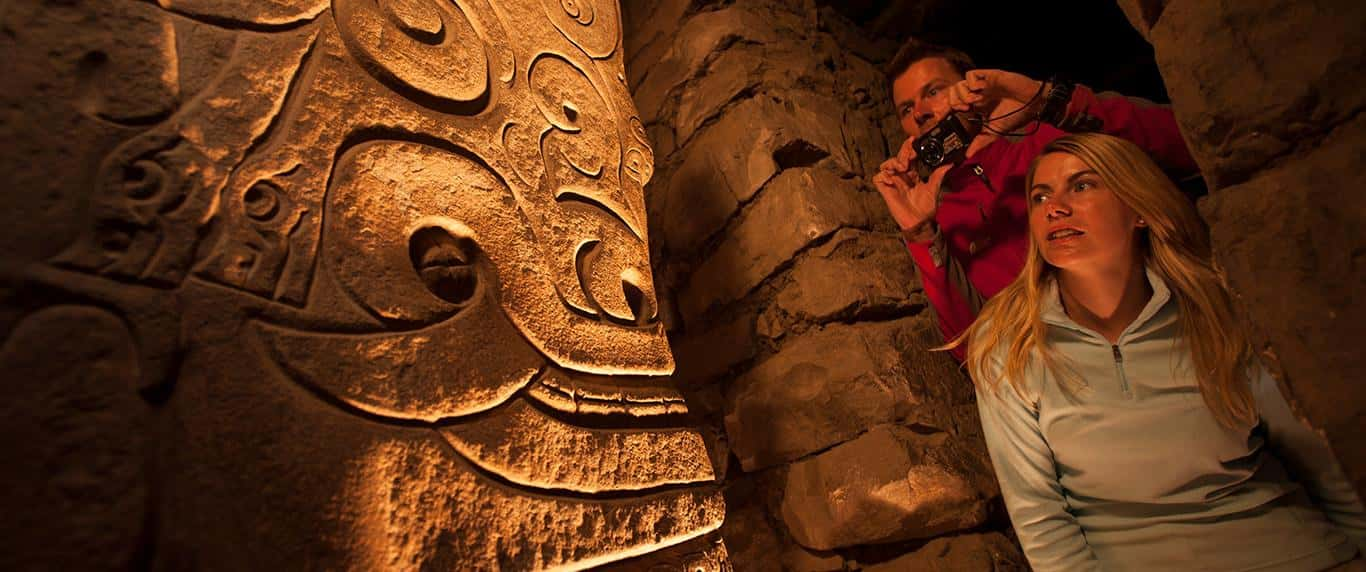
¿Cuál es el exponente más sorprendente del pasado en América Latina?
La respuesta inmediata sería: Machu Picchu… y sí, claro que lo es, pero nosotros te decimos: hay más. Por todo el Perú podrás encontrar vestigios maravillosos que sorprenden al mundo, Machu Picchu es un must, pero también lo son Kuélap y Chavín de Huántar , Caral y Chan Chan , las Líneas de Nasca y Sipán … y seguiríamos enumerando!
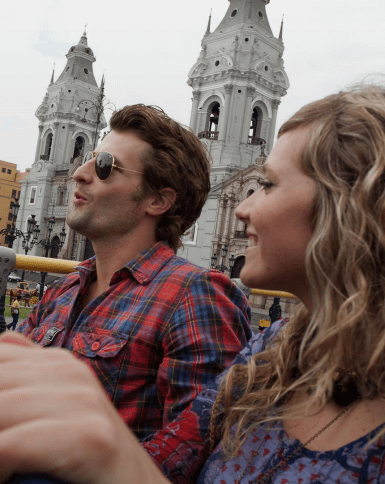
Recorrido Centro histórico de Lima
Conociendo la Lima Colonial
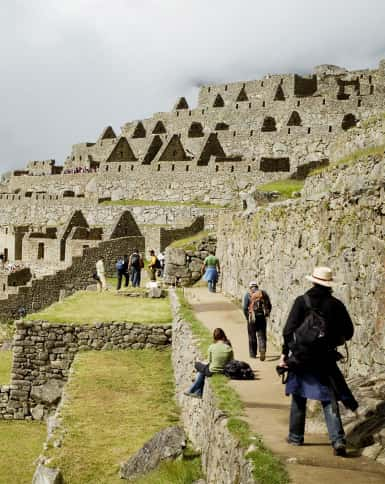
Recorrido Cusco - Machu Picchu
Conoce Cusco y Machu Picchu de una sola vez
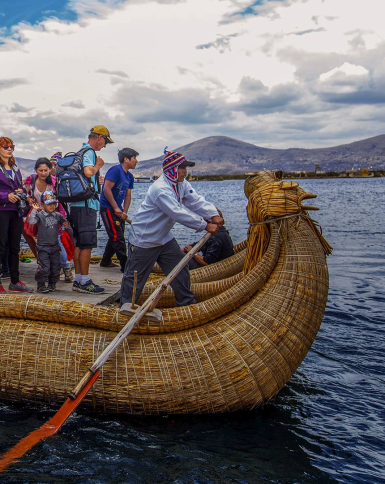
Recorrido Puno - Lago Titicaca
Del cielo verdadero al cielo reflejado
¡Estos son los destinos más buscados!

Donde la tradición es tendencia

Un desierto, todas las experiencias

Imperio viviente

Encantadora tierra volcánica

Donde nace el Imperio Inca
Perú en el mundo
Maravíllate con la diversidad de nuestra riqueza natural, cultural e histórica.

Perú en boca del mundo

Conoce los nuevos circuitos del Santuario Histórico de Machupicchu ...
La maravilla peruana también contará con un nuevo canal de venta de entradas, así como mayor aforo. ...

Arequipa destaca por su tradición gastronómica en National Geographic Travel ...
El portal especializado resaltó la vasta tradición y legado de la cultura culinaria en esta región. ...

Perú, el mejor destino internacional en el mundo ...
Premios de los Lectores 2024 de Viajes National Geographic ...

Diario británico da a conocer las 7 mejores ciudades y pueblos para visitar en Perú ...
Las riquezas peruanas resaltan en el Reino Unido. ...

Este sitio usa cookies: Descubra más

IMAGES
VIDEO
COMMENTS
Boutique travel agency, PeruNorth, takes you where only the discerning dare to tread Employ the experts to help you explore northern Peru's fascinating coast & hinterland.; Myriad ways to visit Peru's vast Amazon region - comprehensive range of Amazon River cruises & lodges.; Fully-customisable itineraries to fit in with your timeframe & South America wish-list.
Overview. Peru is an immense country, yet most travelers spend the majority of their time in and around the region of Machu Picchu in the south. The many pre-Incan civilizations that thrived in the North are less known. The Peruvian government has only started to document (with international support) these cultures in the past 20 to 30 years.
Tours in Northern Peru ,Expert in trips ,Tours over 5 days in North of Peru destinations, Tours Travel Agency in Trujillo North of Region from Peru. Tours Type. Pre Incas Sites; Luxury Travel in north of Peru; ... Norte Expedition Team is formed by expert Local Tours Guides who were part of the Archeologycal Excavations in North of Perú.
Trujillo 2-3 days. A pretty colonial city, it is nice to simply walk around and enjoy the views. However, it is also a great home base for taking day trips to ancient ruins. Most people come to Trujillo to see the famous Chan Chan, which are ruins are an ancient city built from mud but with tours ranging from $5-10 I highly recommend spending a ...
Cajamarca: One of the most important cities in Northern Peru, Cajamarca is an excellent destination that is often overlooked by travelers. Cajamarca is a very historically important town, as it is where the last Inca was held and killed. The most popular time of the year to visit is during February for the city's Carnaval festival.
Trujillo and the north Travel Guide. Book your individual trip, stress-free with local travel experts. Northern Peru is packed with unique treasures - cultural, archeological and natural. Blessed with fewer tourists and better coastal weather than either Lima or the south (particularly in the high season - May to September), the area ...
Gocta Waterfalls & Kuelap: The Chachapoyas Experience. from $1287. 6 Days. Enjoy six full days of adventure, history and natural beauty as you travel around the highlights of northern Peru in the Chachapoyas region. Visit... Chan Chan, Trujillo & Kuelap Tour. from $2591. 12 Days. ...
In short, the north of Peru is often overlooked and skipped by many travelers. On your north Peru itinerary, make sure to include the cities of Mancora, Chachapoyas, Cajamarca, Trujillo, and Huaraz. The diverse north prides itself on coast lines of beaches, rainforests, cloud forests, waterfalls, towering mountains, and alpine lakes.
North Coast. Peru, South America. This staggering shore has some of the world's best surfing and plenty of tanned travelers to keep you company. It's also home to a jaw-dropping array of archaeological sites, colonial cities and evocative desertscapes straight out of Mad Max. In this land of rock and desert sand, you'll also find a few verdant ...
In Northern Peru, you will find amazing ruins with hardly any other people around, discover unique landscapes, and learn about ancient pre-Inca cultures in Peru. "El norte" is a multicultural and colorful destination full of contrasts with a fascinating, diverse culture, history, geography, biodiversity, and gastronomy, from the coastal ...
6. Chan Chan. This massive ancient city, near the modern-day city of Trujillo, is another UNESCO World Heritage Site. From around 900 AD to 1400 AD, Chan Chan served as the center of one of the largest societies captured by the Inca: the Chimú. The Chimú thrived in Northern Peru, and Chan Chan is their crown jewel.
After lunch in Trujillo, we will travel to the archaeological site of El Brujo in Magdalena de Cao city. This is one of the most valuable archaeological sites on the northern coast of Peru. It has a long cultural sequence of occupation that began in the pre-ceramic period (3000 B.C.). Moche culture (0-700 A.D.) left many pieces of evidence in ...
The North Coast of Peru is the Egypt of South America—it has a dry climate and once hosted iconic ancient leaders who built temples, pyramids and empires. This area is now home to spectacular historical sites and large colonial cities. Travelers also enjoy its beautiful beaches, stellar surf sports, and high-quality seafood restaurants.
At Norte Expedition travel we plan custom 4 & 5-star tours to the beautiful less travel sites on North of Peru Scroll through hundreds of different tour ideas ranging from soft adventure to luxury. Choose your favorite destinations region from Trujillo , Chiclayo , Huaraz, Chachapoyas and Cajamarca planned by our expert Travel Consultants.
Whether you are looking for a enriching Peru cultural experience in Pre Incas archeological sites, history ,wildlife safaris ,shore excursion from salaverry port and nature in northern peru, especilized excursions or something more adventurous and off the beaten path, our Team Norte Expedition has the knowledge and expertise to create your ...
2 2. Bosque de Cañoncillo, atracción turística del norte que debes conocer. 3 3. Huacas del Sol y de la Luna, imperdible lugar del norte del Perú. 4 4. Pacasmayo, de las mejores playas al norte de Trujillo. 5 5. Bosque de Amotape, imperdible para hacer turismo en el Norte.
Huaca de la Luna. Huaca de la Luna is decorated with multicolored friezes, one of which covers nearly an entire side of the pyramid. Approximately 160 miles to the north, near the town of Chiclayo, lies the ancient Moche burial site of Sipan, or Huaca Rayada. The site was excavated in the late 1980s, unearthing a royal tomb filled with gold and ...
5. Huaraz. Best for mountaineering. Defined by Cordillera Blanca, one of the most impressive mountain ranges in the world, Huaraz is Peru's capital of mountaineering. The town itself is rather low-key, but it is home base for a number of outdoor excursions, which makes Huaraz a must-visit destination. Verdant valleys give way to the snowy ...
Los turistas a menudo olvidan el norte de Perú mientras se dirigen hacia el sur para visitar Machu Picchu. Pero vale la pena visitar el norte de Perú, ya que abarca las playas de arena de la costa, las montañas de los Andes y la selva amazónica. Tiene de todo, desde surf hasta ruinas precolombinas y flora y fauna únicas.
How to Get to the Northern Peru Beaches. The best luxury beach hotels in Peru are located just outside of the northern seaside town of Mancora, a laid-back fishing town and Peru's most popular beach retreat around 2 or 3 hours drive from either Piura or Tumbes cities.The beach bolthole is easily reached from Lima via a short flight to the northern airports of Tumbes, Talara or Piura, with an ...
1. Chiclayo. Después de Cusco, Chiclayo es el destino turístico arqueológico más importante de Perú. Pero, tranquilo, aunque la región es increíblemente rica en yacimientos arqueológicos Mochica, Chimú y Lambayeque, ¡su afluencia de viajeros no se acerca ni de lejos a la de los yacimientos turísticos del sur de Perú!
11D/10N Tours En El Norte De Peru Expedición en la Costa Norte de Perú Le presentamos nuestra mejor oferta para conocer de verdad la costa norte del Perú , para este itinerario pensamos en los viajeros que buscan aprender de nuestra historia, recorrer nuestros bosques secos, desiertos, valles, antiguas pirámides y también tener un tiempo ...
Tour Del Circuito Norte del Perú de 11 Días y 10 Noches. Si en tus planes está viajar al norte del Perú, te recomendamos este tour de 11 días y 10 noches con recorridos por el circuito norte que comprende: Trujillo, Chiclayo, Chachapoyas y Cajamarca. Lugares emblemáticos con diversidad de atractivos naturales, culturales y arqueológicos ...
Por todo el Perú podrás encontrar vestigios maravillosos que sorprenden al mundo, Machu Picchu es un must, pero también lo son Kuélap y Chavín de Huántar, Caral y Chan Chan, las Líneas de Nasca y Sipán … y seguiríamos enumerando! Ver más. Histórico Cultural.
MiNorte Travel. 126 likes. MINORTE TRAVEL, reconocida operadora de turismo del norte del Perú, con sede en la ciudad de Trujillo y años de experiencia en...